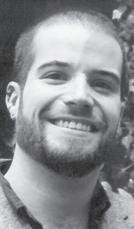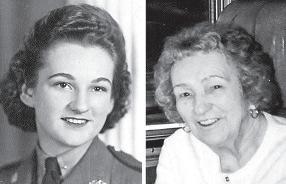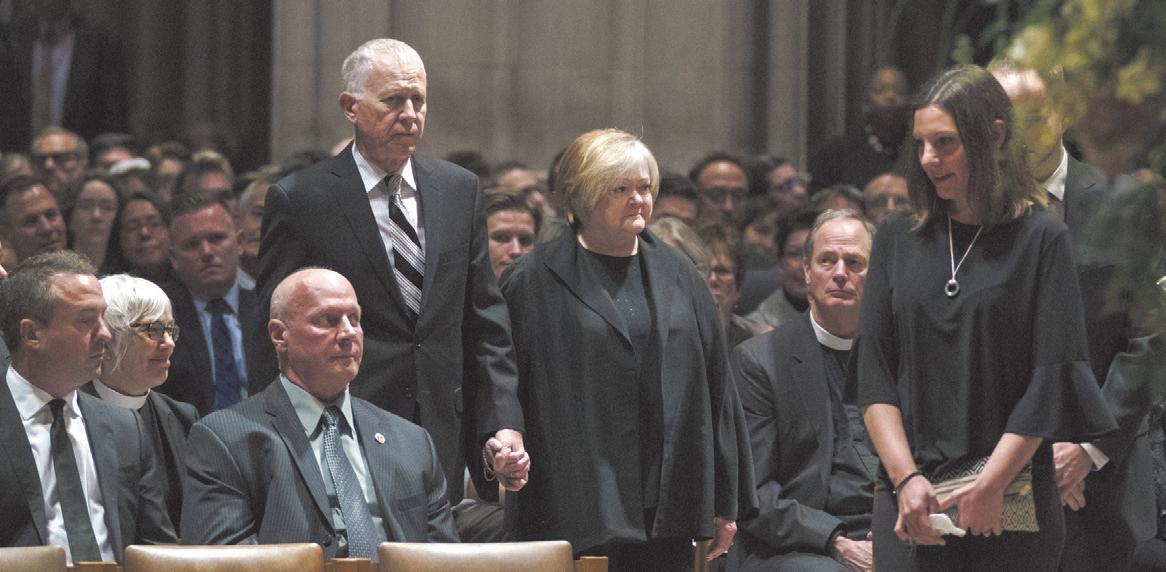Arrest made in attempted mail bombings









Mark NIELSEN Citizen staff
mnielsen@pgcitizen.ca
Ranjit Singh Rarru wants nothing to do with needles.
From a home in the 2200 block of Victoria Street in the VLA, Rarru runs Guru Nanaks Free Food Langar and Garden where he hands out meals and clothing to the needy on a daily basis.
When he found five discarded needles lying in behind the home about two weeks ago, he acted quickly. With help from a building supplier and a contractor, a concrete pad was installed on the front lawn to make it easier to clean while a gate to prevent miscreants from getting into the back yard is in the process of being erected.
With “hundreds of kids here, literally,” he said the needles present a safety issue. His quest to keep the property needle free has not stopped there.
Two people from an upstart social agency dropped by recently and presented him with a clutch of brown paper bags and was asked if he could “hand out these kits.” He was also given a small, hard-shell case with the word “naloxone” printed on it.
Rarru accepted them but after reconsidering what was inside, he had second thoughts.
The bags contain needles and other supplies used to safely inject opioids and, as he found out, naloxone is used to revive a person who has overdosed on the drugs.
Rarru said he was never told how to use the naloxone and, in any case, won’t be handing out the bags. He told the two people as much when they came back to give him more.
The whole episode left him upset.
“These people shouldn’t be having these organizations, they should be banned,” Rarru said. “They shouldn’t be allowed to just be handing needles out.”
Rarru’s story and those like it are among

the reasons why stray needles have become an issue in the city and has left some unsatisfied with the action that has been taken. It’s also inspired some to take the proverbial bull by the horns with their own hands. Retired businessman Barry Boehmer says he has $10,000 pledged to start up a buyback program where people would collect needles and bring them to a depot where
they would be paid on a piece-rate basis.
It’s an idea Northern Health does not endorse. Reanne Sanford, the regional nursing lead for harm reduction with Northern Health, raised a number of concerns. They include users simply taking needles from Northern Health and handing them over to the depot for a profit, creating waste. She also questioned the ability of the depot to
safely handle large numbers of needles. But perhaps most important is the worry that users will lose the connection with the people who can help point them in the right direction should they want to find ways to end their habit because they choose to go to the depot rather than Northern Health to drop off their used needles.
— see ‘NORTHERN HEALTH, page 3
With the year still far from over, the value of building permits issued by city hall has set a record.
As of Friday, it stood at $169.26 million, city hall said, well above the previous high of $147.88 set in 2007.
At $135.17 million, the amount represented by private-sector investment has also set a record, surpassing the previous high of $121.6 million set in 2016. It also accounts for nearly 80 per cent of the value of all permits issued so far this year.
And at $100.3 million, residential building permit values have also set a new record.
“The value of building permits is a key measure of economic progress,” Mayor Lyn Hall said.
“This number suggests a great increase in construction activity and related employment, as well as other direct and indirect economic benefits.”
The top 10 projects for 2018 are:
New construction of Kelly Road Secondary School: $28.3 million
• Parkade next to city hall: $12,927,973


• New multi-family development (Third Avenue): $2.6 million.
• New multi-family development (Vanier Drive): $1.6 million.
• Alterations to temporary community living space for AWAC in downtown Prince George (Association Advocating for Women and Children): $1.5 million.
• Interior alterations and patio canopy addition to Browns Socialhouse at Pine Centre $1.5 million.
A total of 427 building permits have been issued so far this year. Also, downtown vacancy rates are at an eight year low according to a recent study by the city. The vacancy rate stood at 10.55 per cent, which represents a 0.58-per-cent decrease from 2017 and a 4.65-per-cent decrease overall since 2011. By contrast, over the same time period (since 2011), there has been an 8.59 per cent increase in total floor area – to 220,339 square metres – available for
The full study is posted on the city website.


Frank PEEBLES Citizen staff
Tonight is one of the city’s most anticipated parties of the year.
Menagerie is the Two Rivers Gallery annual Halloween blast, and this year the theme is Adrift In Space. This year marks the eighth edition of the masquerade fundraiser.
“This event is much more than a costume party for adults,” said a statement from the party planning team at the gallery. “There will be live entertainment, exhilarating games, and excellent prizes to be won. A selection of cocktails, wine and Crossroads Brewing beer will be available in the Starchaser Saloon. Appetizers can be devoured throughout the night while you bid against friends and foes in the silent auction for a chance to win marvelous treasures.
“Tempt fate with a visit to the fortune tellers, who will consult the cosmos and divine the answers to your most pressing questions. Sample spirits from our specialty bar and dance the night away amidst the stars and planets to the musical stylings of our DJ.”
One of the features this year is the way hoop dancer Kassandra Mae drifts through the space of her dazzling circles. The Prince George performer is one of the few in the region to specialize in this unique form of artistry.
“I first started hoop dancing after I witnessed a performer at ArtsWells festival in 2012, I believe,” she told The Citizen the day before the big night.
“I was immediately in awe of her skill, which inspired me to learn myself.”
The hoops she uses are often a spectacle unto themselves, the music is ethereal, and her gymnastic control makes for a unique multi-sensory experience for the audience.
“When I first started I spent at least an hour everyday learning how to control the hoop ‘on-body’, ie: around the waist, around the legs, and being able to fluidly

move the hoop on body. My partner actually taught me my first trick called the Vortex. Afterwards I took to YouTube and Instagram to find tutorials and other hula hoopers around North America for inspiration.
Babz Robinson and Deanne Love were a few of my first inspirations who have great tutorials on YouTube. This past summer I went to a hoop retreat called Flow In The Forest where I got
to meet some of the leading performers and instructors in North America who i would say in that short amount of time mentored me quite well.”
Mae comes full circle tonight at Menagerie: Adrift In Space which runs “from 8 ‘til late” at the downtown arts centre. Tickets are $65 regular or $40 for students available online via links at the Two Rivers Gallery website and Facebook page.
Frank PEEBLES Citizen staff
Chambers of commerce all across Canada take part in group insurance plans for their members. For many entrepreneurs, it is the only way to affordably or practically obtain comprehensive insurance coverage.
Each year the sales agents who administer these insurance programs gather for a national convention.
It was announced at the National Conference of the Chambers of Commerce Group Insurance Plan annual meeting that Prince George’s Linda Rempel was
among the best of these agents in the country. Rempel was chosen in a peer vote as the recipient of a Sales Excellence Award at the gathering in Quebec City.
“Twenty-one advisors from across Canada were recognized with a Sales Excellence Award based on highest annual production levels over the past two years,” said Rempel.
“This is my first time to be recognized at the national convention, where the top 100 Chambers Plan Advisors across the nation are invited.”
The Chambers Plan is the largest
employee benefits program of its kind in the country, providing tangible benefits to members of participating chambers and boards.
Rempel is the exclusive Chambers Plan advisor in north-central B.C. She works at Sun Life Financial.
“The Chambers Plan was introduced over 40 years ago to make group benefits available to smaller firms,” said Rempel.
“Today, more than 30,000 small and medium sized businesses nationally, who are members of 850 chambers of commerce and boards of trade, all endorse the plan.”
Frank PEEBLES Citizen staff fpeebles@pgcitizen.ca
City Hall is now flying on the Millennium FanCon.
Prince George mayor Lyn Hall announced this week that the Citizen’s flagship cultural event, Northern FanCon, would be celebrated with a commemorative set of days during the public convention this spring.
Now in it’s fifth year, Northern FanCon moved its dates to coincide with one of the calendar’s most fortuitous quirks. May 4 is already a friendly punch line in pop culture, since it can be said as “May the 4th be with you” to make an easily recognizable Star Wars pun. Now it forms the fulcrum of this interactive celebration of films, TV shows, books, comics, toys, arts, internetivity, costumes, makeup, games, hobbies and anything that gets your geek on.
Northern FanCon will be held at the CN Centre mothership from May 3-5, and that’s when the municipality will fly the event flag at city hall.
“Congratulations on five years,” said Hall to event director Norm Coyne of UNLTD Events. “FanCon has become an event that people wait for, and an event to go to.”
“I was scared beyond belief,” said Citizen publisher Colleen Sparrow, remembering the launch of Prince George’s own pop-culture convention back in 2014. Hall agreed that it’s difficult to get a major event up and running, but look at it now.
“All of these events mean that we are attracting people to Prince George to participate in something really special,” Hall said. “The variety and the diversity of events that take place here is what we’re talking about here today as well. You and your team, Norm, have done a helluva job and I’m so proud of that fact that, five years, a lot of events struggle (in their early years) so to get to five, you’re over the top. So congratulations.”
A proclamation will be entered into the public record as part of the commemorative Northern FanCon Days citation.
The presence of Northern FanCon over the years has played a noticeable role in the formation of the city’s fledgling but award-winning screen arts industry, and also its eye-popping cosplay industry. It has deepened the gaming and hobbyist recreations, taught useful skills in the various workshops that accompany the events on the convention floor, made some celebrity encounter dreams come true for devoted fans, and most importantly of all, has generated a unique and lucrative injection into the local economy. Hall remarked at all the countries that have had citizens come through the Northern FanCon doors, sending them home with a truly unique and personal connection to our city.
“Prince George is already on the provincial and national map, but I would argue it is also now on the world map,” said Hall, citing FanCon as one of many magnetizing events this city is now accomplishing with regularity in the realms of business, education, sports and arts. FanCon, uniquely, touches a bit on all of that.



— from page 1
She also notes that of the 450,000 needles Northern Health handed out during 2017, 400,000 were returned or nearly 90 per cent.
She also contends many of the remaining 50,000 have been disposed of safely via such things as the sharps containers installed around the city.
But Boehmer, who hopes to have something up and running before the snow falls, remains skeptical saying he’s heard too many horror stories about needles found behind businesses and in school yards.
“Northern Health, in my opinion, is doing a tremendous job if there is 90 per cent being picked up,” he said. “What we want to do is make sure we work together and, in a positive frame of mind, get the other 10 per cent and get it eradicated.”
Sanford favours so-called “peerrun models” and pointed to a program now up and running in Quesnel as an example.
Since May, a crew of four people described as “vulnerable to homelessness” have been patrolling Quesnel’s streets picking up discarded syringes from around businesses before they open for the day as well as around school grounds.
Known as the Clean Team, they have picked up 1,782 needles as well as 382 bags of garbage and 32 bags of recycling over the past
four months. A previous version of the team that worked on an irregular, on-call basis “picked up thousands,” Clean Team coordinator Jenny McDougall said. “This year, it’s gone down I’d say half at least.”
The venture, which is being run on a pilot program basis, is funded through a partnership between the City of Quesnel Housing and Northern Health. It has a budget of about $30,000, with each of the crew members working eight hours per week for $15 per hour.
The venture has won approval from the community’s mayor, Bob Simpson, who otherwise has been an outspoken critic of much the federal and provincial government’s strategy to deal with the ongoing opioid crisis, which he has called ineffective.
“I haven’t seen a Facebook post or anything on needles for a long time and we were getting it almost on a daily basis before we put the team in place,” he said.
Key to its success, in Simpson’s view, is that MacDougall also hands out what he called the “harm reduction kits” at the community’s native friendship centre.
“Because of that connection, she is in the face of individuals coming in to make sure that what they will be taking they will be careful about using,” Simpson said.
As for establishing a buyback program, Simpson “wouldn’t do it, wouldn’t touch it with a 10-foot pole.”
New cell service coming to Highway 16
Citizen staff
New wireless coverage is on its way to a neglected portion of the Highway of Tears.
Construction of a cell tower that began in September should be completed within the next few months and once it is, continuous coverage along 22 kilometres from New Hazelton to Smithers will be in place, the provincial government said Friday.
“This new cell tower will make it much easier for people to call for help during an emergency and is another essential element to further improve safety along Highway 16,” said Citizens’ Services Minister Jinny Sims in a news release. Highway 16 West, from Prince George to Prince Rupert, has been known as the Highway of
Tears for the number of women who have gone missing or have been murdered along the stretch.
The provincial government provided a one-time $1.2-million grant for the project. It was administered by Northern Development Initiative Trust which selected Rogers Communications for the project following an open-procurement process.
When operational, the tower will enable voice, data and text services via high-speed wireless and internet coverage on 4G and LTE networks for Rogers and Fido customers. Customers using other providers will be able to dial 911 in the community and along the highway.
It will also bring service to the Witset First Nation, the only band along the corridor without cell coverage.
Simpson said the idea was given a look when it was first raised by a local financial institution. He came away echoing many of the concerns raised by Northern Health about improper handling of needles.
Perhaps the closest Prince George has to something like Quesnel’s Clean Team is the Drug and Alcohol Recovery Team (DART). Among its many contracts is one with the city to patrol 7.5 kilometres of trails along the two riverbanks, picking up needles whenever crew members see them.
DART coordinator Glen Grant said he’s willing to expand the effort, noting that in addition to about a dozen workers he has a fleet of seven trucks.
“It would be very simple for us to put a route together... and every morning I could have a crew of people out at six or seven o’clock in the morning where the problem sites are and we could be checking those before anybody ever started (their day),” Grant said.
Mayor Lyn Hall said discarded needles are an issue and not just in the city’s downtown. He also predicted it will be a major topic of discussion when the new council begins budget discussions in January. But he also stressed the city’s bylaw services department and parks crews have been providing clean up services. Indeed, it could be said the
origin of the latest flare up in the controversy was the success of a sweep two bylaw services officers carried out in the downtown in August.
Rather than simply responding to complaints called into city hall, they went out to various hot spots around downtown and gathered enough needles to fill three fivegallon buckets.
A picture presented during a city council meeting of a pile of the needles they collected drew a strong reaction from Coun. Brian Skakun, who had some harsh words for Northern Health.
Skakun intends to raise the issue at the next Union of British Columbia Municipalities convention, saying Prince George is not the only community stuck with the problem. In Cowichan, more than 1,000 needles were pulled from the local river and shoreline during a recent community cleanup, he noted.
He questioned why municipalities should be responsible for the cost of cleaning up a problem tied to provincially-funded health authorities.
“I would think the province could easily tell them, ‘look, if you want all your funding, you’re going to have to live up to certain commitments but it’s definitely something I’ll be working on with the other municipalities because it’s not only a local issue, it’s a provincial issues,” Skakun said.
— see related story, page 4
Meghan Hunter-Gauthier assistant curator at Two Rivers Gallery puts the final touches to the decor for Menagerie: Adrift in Space – the gallery’s biggest fundraiser of the year. It will be a night of entertainment, food, fun, and games. See related story, page 2.




Mark NIELSEN Citizen staff mnielsen@pgcitizen.ca
The Central Interior Native Health Society has secured $75,000 to bring safe injection to drug users.
Dubbed Preventing Overdose Undoing Stigma (POUNDS), the program will be centred on teams of two people who will act as a “mobile overdose prevention team.”
“We will meet individuals wherever they are in the community, whether they’re in private residences or in public spaces and they’re using substances alone,” said program coordinator Jordan Harris.
The team will monitor the user and “if they overdose, we’ll be prepared to reverse that overdose and save their life.”
Each of the nine teams will be made up up of a “peer” or a person who uses drugs and another who doesn’t. Harris said the idea is to combine professional education with the value of lived experience and to reverse some of the stigma directed towards users.
They will also provide training on the use of naloxone, used to reverse the effects of an opioid overdose, distribute safe injection kits and provide testing for fentanyl, a highly-potent form of opioid considered the reason for the surged in deaths by overdose.
And when able, they will help dispose of “sharps” or discarded needles found around the city.
“Our priority is saving lives, but we’re definitely interested in making the community a safe place for everybody,” Harris said.
As of the end of September, 29 people have died in the city from illicit drug overdoses, up from 22 for all of last year, according to the B.C. Coroners Service. For the province as a whole, the count is 972 deaths so far, compared to 1,452 for all of 2017.
“The overdose crisis in this community is really not over,” Harris said.
“There’s kind of a general impression that we’re coming out of this crisis because the numbers down south are starting to decline but they’re not in the north.
“We’re continually being rocked by loss in our community and that’s why this program is so important. Over 90 per cent of those overdoses are happening inside, alone, where people are using for a number of reasons but stigma is a big part of why people use alone.”
The teams should be ready to hit the streets at some point in November, once training had finished and an outreach vehicle has been lined up. They will work Wednesday to Sunday from 8 p.m. to midnight, extending their shifts to 2 a.m. during the weeks when social as-
sistance cheques arrive. Harris said overdose prevention services are largely limited to the Northern Health harm reduction office at Third Avenue and George Street and it’s open Monday to Saturday, 1 to 6 p.m. It’s also only for those who inject whereas POUNDS will also be able to accommodate those who smoke.
“If we can keep them alive, we can give them an option to find hope another day,” Harris said. The funding is enough to keep the program going for 10 months but Harris said additional grants are being pursued.
“And at around probably the threemonth mark, we will see how we’re doing and if we’re meeting any of our goals in any capacity at that point, we’ll start pursuing some ongoing funding so we can create a sustainable program,” Harris said.
Holding an open house in Prince George to increase public awareness of addiction and available services is also a goal. As well, the New Hope Society received $19,874 for a variety of initiatives geared towards marginalized women and sex workers, such as naloxone training and overdose prevention, as well as support for grief and loss over the course of the year.
The B.C. Mental Health and Addictions Ministry announced the funding this week.
UNBC has been recognized for making significant gains in research funding in a national ranking of Canadian universities.
UNBC’s research funding for fiscal 2017 increased by 29.8 per cent, from $7.6 million to $9.9 million, the second-largest growth in research income for a primarily undergraduate university.
The rankings are released by Research Infosource, a publication that specializes in research data and highlights research activity within Canadian universities.
This percentage in growth strongly outperforms the national trend, and has boosted UNBC’s ranking up three spots to 45 on the Top 50 Research Universities List. The funding is based on grants, contributions, or contracts from external sources.
“The past few years have been incredibly productive for research at UNBC, meaning UNBC is entering a significant moment in its history,” said Geoff Payne, UNBC’s vice president of research and graduate programs, in a news release.
“UNBC plans to leverage this success by increasing student
enrollment and improving student education and experiences.
This will subsequently make a positive impact on faculty recruitment and retention by fostering a mindset of innovation towards research.”
Some highlights over the past year include:
• The Hakai Cyrosphere Node, a joint initiative between UNBC and Vancouver Island University to study the role of snowfall and glaciers play in the hydrology of key watersheds along B.C.’s Central and Southern Coast.
• Remote entrepreneurial internships for UNBC students with Toronto-based startups through the Impact Centre at the University of Toronto.
• The UNBC-TeejLab Centre of Excellence in Data Privacy, Security, and Integrity provides thought leadership, support, and training in the field of data intelligence and “using that data to improve our lives without sacrificing security and integrity.”
• Harvesting Moringa tree root bark to grind into a powder to be used as a potential water treatment, for use in at-risk communities such as rural First Nations in Northern B.C., which could have significant global impacts.


James McCARTEN Citizen news service
WASHINGTON — Prominent Democratic denizens of America’s superheated political atmosphere breathed a sigh of relief Friday as investigators in Florida arrested a man they allege mailed crudely fashioned pipe bombs to at least 13 of U.S. President Donald Trump’s most visible critics and rhetorical targets.
Cesar Sayoc, 56, was arrested at an autoparts store in the Miami suburb of Plantation shortly before police seized a van from the parking lot. The vehicle – where the suspect had reportedly been living – was decked out in Republican stickers, American flags and celebratory images of the U.S. president.
The attempted bombings, which targeted an array of high-profile Democrats ranging from former President Barack Obama and ex-secretary of state Hillary Clinton to former CIA director John Brennan and actor Robert De Niro, marked a new low point in a fiery political season that has put Trump’s bare-knuckle style on trial.
And despite suggestions earlier in the week that he would tone it down, the president was in his usual form Friday during a “Make America Great Again” rally in Charlotte, N.C., whipping the crowd into a frenzy and trying to turn the tables on the media, accusing them of blaming him for the attempted bombing attacks.
“The media’s constant, unfair coverage, deep hostility and negative attacks only serve to drive people apart and to undermine healthy debate. We have seen an effort by the media in recent hours to use the sinister actions of one individual to score political points against me and the Republican party,” Trump said.
“Our supporters are some of the most honest, wonderful, principled, hardworking, patriotic people on the face of God’s earth. They pay their taxes, follow our laws, care for their neighbours, go to church and contribute to charity, and they are loyal to our country – all they want is a government that is loyal to them in return.”
When the now-familiar chant of “lock her up” – a reference to Clinton – rose up out of the crowd, Trump smiled and said, “They’re going to be reporting about you tonight.”
FBI Director Christopher Wray refused Friday to discuss a political motive for the attempted attacks, but in celebrating what he characterized as a massive co-operative effort among U.S. law enforcement agen-

cies, he did make clear that Sayoc’s arrest marked a step in the right direction.
“The partnerships that exist in the law enforcement profession in this country are extraordinary, and they’re better than they’ve ever been,” said Wray, whose agency has itself been a frequent target of the president’s ire.
“It’s exactly what the doctor ordered for this country at this time.”
News of the arrest followed an eyebrowraising presidential tweet in which Trump blamed “this ‘Bomb’ stuff” for usurping political media coverage and stifling earlyvoting turnout for pivotal U.S. midterm elections.
That appeared to be a nod to conspiracy theories suggesting the bombs were part of a hoax, something Wray made clear wasn’t the case: “These were not hoax devices.”
The devices – Wray called them IEDs, or improvised explosive devices – were packed with “energetic material” and could have caused harm if triggered by “heat, shock or friction,” he added.
Sayoc, an amateur body builder who 16 years earlier was on probation for a bomb threat charge, has social media accounts that vilify Democrats and praise the president. Misspellings from his online posts matched mistakes found on the packages, according to an 11-page criminal complaint.
Attorney General Jeff Sessions had a warning for anyone who might be stirred to violent action by the powerful feelings on both sides of the political spectrum.
“We will find you, and we will prosecute you to the fullest extent of the law.”

Camille BAINS Citizen news service
VANCOUVER — A British Columbia man has been deemed inadmissible to Canada for being a security risk based on his Facebook posts that glorified terrorism in support of the Islamic State group, the Immigration and Refugee Board of Canada says.
Othman Hamdan is a Jordanian national who was acquitted of three terrorismrelated charges by a B.C. Supreme Court judge in September 2017, but immigration authorities kept him in custody and determined at multiple detention reviews that he poses a danger to the public.
The board, which must establish whether an allegation is true rather than proving guilt beyond a reasonable doubt, says in a written decision released Friday that a deportation order has been issued for Hamdan.
Marc Tessler says in the ruling that Public Safety Minister Ralph Goodale alleges much of the content in 85 Facebook posts amounted to counselling and supporting others to commit terrorist acts in Canada, the United States and other western countries.
“The minister asserts that Mr. Hamdan assumed for himself the role of a spokesman and cheerleader for the Islamic State but more specifically he glorified and encouraged lone wolf attacks,” the decision says of the man’s posts between September 2014 and July 2015.
Facebook began shutting down sites it identified as supporting the Islamic State, but Hamdan created new accounts and was posting on about 14 accounts. His security settings allowed anyone to read his posts.
Hamdan tried to explain away his use of the acronym IED, telling an admissibility hearing it stood for Internationally Epic Defeat, dismissing concerns that it is also used for Improvised Explosive Device.
“IED stands for any three words that begin with these three letters, so you could make up a whole lot of things that begin with these letters,” Hamdan said during the hearing, even though his post referred to the terrorist bombings at the Boston Marathon in 2013, where two brothers used pressure cookers as improvised explosive devices.
Four of Hamdan’s posts mention the Islamic State offering a reward of about US$16,0000 to whoever kills a pilot of an alliance of countries fighting terrorism. The posts followed the downing of a Jordanian air force jet and capture of a pilot who was killed by being burned, with the Islamic State disseminating a video of
The minister asserts that Mr. Hamdan assumed for himself the role of a spokesman and cheerleader for the Islamic State but more specifically he glorified and encouraged lone wolf attacks.
— Ministry of Public Safety statement
the execution.
Hamdan posted a link to the video, with a caption that suggested the pilot’s death was justified because of the actions of alliance countries that bombed civilians from the air: “Think is it OK to kill kids under any circumstances!!! No then why is it OK when the murderer is a jet pilot that’s miles away!!!”
The decision says Hamdan, who was born in the United Arab Emirates, cast his activity on Facebook as an alternative news source, providing his followers with another view of events in the Middle East.
“Mr. Hamdan, however, did not merely report news, he identified with and allied himself with a terrorist organization and he served that organization’s social media agenda by relaying its messages.”
Hamdan was arrested in 2015 at his home in Fort St. John and told the court he moved to Vancouver in 2002 after studying electrical engineering in the United States, where he said he faced discrimination following the 9/11 terrorist attacks. He was granted refugee protection in Canada in 2004. He applied for permanent resident status but his application was declared abandoned four years later.
On Oct. 22, the Refugee Protection Division of the board allowed the public safety minister’s application to cease Hamdan’s refugee protection. He has already applied to the Federal Court for a judicial review. An RCMP officer told an admissibility hearing in April that Hamdan was not a “couch jihadist” with a big mouth but someone who was radicalized by Daesh, also known as ISIS or ISIL.
Hamdan threatened Facebook and the RCMP in his posts and discussed infrastructure in Canada, including a dam in Revelstoke and a bridge near Nipigon, Ont., suggesting they were weak targets.

Aleader’s power to unilaterally pardon the guilty sits uncomfortably with modern democratic norms. There’s something distastefully monarchical about a ruler who can, apropos of nothing but personal whim, overturn the reasoned judgment of a judge or jury, magically transforming guilt into innocence.
In June, Prime Minister Justin Trudeau’s government passed legislation to overturn the criminal convictions of any Canadian found guilty of breaking the country’s archaic sex laws that were once used to persecute LGBT people for consensual behavior. A similar initiative is now planned to forgive Canadians convicted of simple cannabis possession, in the aftermath of the Trudeau government’s formal legalization of the drug last week. These mass pardons are rooted in a forgivable empathy. The persecution of LGBT Canadians under vague “sodomy” and “indecency” prohibitions was undeniably one of the great cruelties the Canadian state committed. If one is inclined to view consumption of marijuana as innocuous (I’m not, personally), then it similarly follows that the Canadian state committed decades of cruelty punishing men and women for this “victimless crime.”
Yet even Canadian laws written in a dark age of ignorance were still laws produced and enforced by Canada’s democratically
elected government. They were public laws known to citizens of the time, and they were broken with equal knowledge. The punishments, enforced by the police and courts, may have been disproportionate, unfair or inconsistently applied, but the state’s right to impose punishment on lawbreaking citizens is part of the social contract any functional civilization rests upon.
In a democratic society, the appropriate reaction to bad laws is to agitate for their repeal by the legislature, which is precisely what happened in the case of Canada’s anti-LGBT statutes and pot prohibitions. Changing public attitudes on drugs and sexuality gave rise to a new generation of elected leaders with mandate to modernize Canada’s criminal code.
It has never been part of our constitutional process for all consequences of previous legislation to be erased, however. The pardon power is most properly applied to individual cases where the guilty party can make a convincing case that he or she was a victim of some significant error of the legal system, ideally adjudicated through a neutral assessment of clear criteria. Pardons of compassion are more easily compromised by politics (see: D’Souza, Dinesh), but are at least theoretically supposed to involve assessing the mitigating circumstances of individual cases as well.
A politician who makes a habit of pardoning an entire class of persons, however,
makes a more radical assertion about our legal system: that consequences suffered from breaking the law are inherently tenuous, always just one election away from being overturned. The relevant variable ceases to be the action of the guilty or the circumstances of his or her conviction, but rather a politician’s subjective assessment of a law itself. The result is an erosion of how seriously any law is taken.
The fact that Trudeau has now offered two sweeping pardons motivated by posthoc ideological judgments should inspire curiosity as to what class of the presently convicted could be the next winner of the absolution sweepstakes. With marijuana charges overruled, one certainly expects the prime minister to face increasing pressure to absolve Canadians convicted of nonviolent crimes involving other drugs as well.
Once the Conservatives get back in power, they could play this game too (and in fairness, have, to some degree, in the past). Perhaps a blanket pardon for all offenders of Canada’s recently strengthened gun control laws? Or maybe a mass pardon of everyone found guilty of evading the high tax rates of Liberal governments past?
Once we embark on the project of undoing the consequences of all bad legislation, it becomes similarly difficult to know how deep into history we should plunge. Last year, Trudeau posthumously pardoned six aboriginal chiefs who were executed in the

In response to Tim Schouten’s letter on assisted dying:
I do not share Mr. Schouten’s disdain for the language of euthanasia and I must insist that it is completely unreasonable to refer to medical assistance in dying as murder.
If you can’t see the difference between taking someone’s life against their will, Mr. Schouten, and helping a consenting individual declare “enough is enough,” then assisted dying may not be right for you.
If you don’t want assistance dying, then don’t apply for it. And obviously that’s just not how murder works.
One day, if the time is right, myself and/or others may ask for assisted dying and it will be our choices that make the call, not the subjective perceptions, limitations, and/or religious beliefs of other people.
Scott Harris Prince George
I have read a number of letters to the editor. I, for one, am in favour of proportional representation. I am of the opinion that we will have better governance.
As a Canadian tax payer and voter, I am sick of the scandals, lies and lack of good manner of
our elected officials in the Legislature. After working 30 years, I can look back on the changes in my career. The way I did thing changed enormously though the job title didn’t. Had I not changed and adapted to this change I would not have lasted.
Federal MP Nathan Cullen held public hearings and submitted a bill for electoral reform but this bill didn’t become law. When one looks at the amount of people who attended these meetings, that tells me that many people wanted electoral reform. In other words, the ruling party ignored all this hard work and the wish of the electorate.
Many Canadians still feel robbed by Justin Trudeau reneging on his electoral reform promise. The first past the post people seem to always suggest radical groups taking over the government agenda. I remember we in Canada have gone through the Bloc Quebecois and the Parti Quebecois. We as a nation survived them. Change is constant and if we quit adapting to it, we are in trouble.
Stan New Prince George
In their latest attempt to sway voters to vote no in the referendum on electoral reform, the B.C. Liberals and supporters have
taken to using attack ads featuring flag waving protest crowds, burning tires and Nazi soldiers as examples of what would happen if voters endorsed proportional representation.
The B.C. Liberals have gone too far. Not content with the lies, misinformation and fear mongering of the last few months, they have resorted to despicable attack ads. Who would support a party that condones this type of behaviour?
The B.C. Liberals have lost their moral compass in their lust for power. They fear that life as usual will be a thing of the past if PR gets accepted. They will have lost the stacked deck that has guaranteed them power with only 40 per cent of the popular vote.
The yes side has used negative ads, referring to how first past the post does not protect us from far right governments. They have used Doug Ford in Ontario and Donald Trump in the U.S. as examples.
But that has been in response to the continuous message that first past the post will protect us from extremism.
In using the fear ads featuring Nazis, they are engaging in the very extremism that we really should be concerned about. What we need protection from is the mendacity of a party that will sacrifice the truth for power.
Daryl Sturdy Vancouver
LETTERS WELCOME: The Prince George Citizen welcomes letters to the editor from our readers. Submissions should be sent by email to: letters@pgcitizen.ca. No handwritten letters, please. They can also be faxed to 250-960-2766, or mailed to 201-1777 Third Ave., Prince George, B.C. V2L 3G7. Maximum length is 750 words and writers are limited to one submission every week. We will edit letters only to ensure clarity, good taste, for legal reasons, and occasionally for length.


Mailing address: 201-1777 Third Ave. Prince George, B.C. V2L 3G7 Office hours: 9:00 a.m. to 5:00 p.m., Monday to Friday
General switchboard:
250-562-2441 info@pgcitizen.ca
General news: news@pgcitizen.ca
Sports inquiries: 250-960-2764 sports@pgcitizen.ca
Classifieds advertising: 250-562-6666 cls@pgcitizen.ca
aftermath of the so-called Chilcotin War of 1864. Given the prime minister’s opposition to the death penalty, is there any argument against a posthumous pardon for all 710 Canadians executed during the country’s era of capital punishment? In 2010, Nova Scotia posthumously pardoned Viola Desmond, a black woman convicted of trumped-up charges in 1946. Knowing that systemic racism and sexism have historically poisoned the Canadian justice system, is there any argument against blanket pardons for all indigenous or female Canadians convicted before whenever our present age of tolerance began?
Governments are cursed to hold legal continuity with administrations whose past deeds have ranged from incompetent to sinister. Politicians can atone for this by repealing the bad laws of their predecessors, while citizens can modernize their opinions about convictions they now consider forgivable. Ceasing to blindly discriminate against all Canadians with “criminal records” in favor of making an effort to distinguish between them is but one example.
That authority to punish remains any state’s greatest power. Our energies are best directed toward ensuring future generations do not suffer from its frivolous or cruel exercise, rather than seeking teary atonements after it is.
—
J.J. McCullough is a political commentator and cartoonist from Vancouver
The dire warnings about minimumwage increases keep proving to be wrong.
So much so that in a new paper, the authors behind an earlier study predicting a negative impact have all but recanted their initial conclusions.
Seattle, like some other thriving West Coast cities, a few years ago passed an ordinance raising the minimum wage to $15 an hour in a series of steps. The law was a partial response to rising income inequality and poverty in the city.
The reaction was immediate, strident – and deeply wrong. The increase was an “economic death wish” that was going to tank the expansion and kill jobs, according to the sages at conservative think tanks. The warnings were as unambiguous as they were specific: Expect restaurants to close in significant numbers and unemployment to rise, all because of this foolish attempt to raise living standards.
Those ideologically opposed to mandated minimum-wage increases freaked out when a Seattle pizza parlour closed. Meanwhile, they ignored data showing Seattlearea employment in the restaurant industry on the rise. The critics even blamed Seattle’s minimum wage law for unemployment in suburbs not covered by Seattle’s laws. Despite their dire forecasts, not only were new restaurants not closing, they were in fact opening; employment in food services and drinking establishments has soared.
Alas, if only the critics has done their homework first, instead of using scare tactics.
Much of the hand-wringing was based upon a deeply flawed University of Washington study. The study’s fatal flaw was that its analysis excluded large multistate businesses with more than one location. When thinking about the impact of raising minimum wages, one can’t simply omit most of the biggest minimum-wage employers in the region, such as McDonald’s and other fast-food chains, or Wal-Mart and other major retailers. These are the very employers that were the main target of the minimum-wage law; indeed, the law established an even higher minimum wage of $15.45 an hour for companies with 500 or more employees.
There were two other glaring
defects in the first study that are worth mentioning. The first is that its findings contradicted the vast majority research on minimum wages. As was demonstrated back in 1994 by economists Alan Krueger and David Card, modest, gradual wage increases have not been shown to reduce employment or hours worked in any significant way. Ignoring that body of research without a very good reason made the initial University of Washington study questionable at best.
Second, there potentially is a problem with having a lead researcher – economist Jacob Vigdor, whose affiliations among others include the right-leaning Manhattan Institute – whose impartiality is open to question. I don’t wish to suggest people cannot have opinions, but researchers need to be open-minded. This especially true in fields like economics and public policy, where belief systems and political affiliations can have an outsized impact on objectivity.
Now of course, we should consider the argument that Seattle’s economic growth has been so strong that it overwhelms any negative effects from the higher minimum wage. No one should ignore that possibility and we will be among the first to acknowledge that this could be the case. We may never know for sure, because in economics you don’t get a chance to run control experiments; you only have the facts at hand. But we can’t emphasize enough just how wrong many of the initial analyses of the wage increase have been.
Cognitive dissonance is a powerful force. If your ideology includes the belief that all government attempts at raising living standards are doomed, then of course you are going to be against mandated minimum wages. The problem occurs when these folks are confronted by facts that are at odds with their belief systems. The options are to either rethink your ideology or alternatively ignore the data. Most participants seem to have done the latter. — Barry Ritholtz is a Bloomberg Opinion columnist and is the author of Bailout Nation
Display advertising, digital advertising and website inquiries: 250-562-2441 ads@pgcitizen.ca Reader sales and services: 250-562-3301 rss@pgcitizen.ca
Letters to the editor: letters@pgcitizen.ca
Website: www.pgcitizen.ca
Website feedback: digital@glaciermedia.ca Member of




Steve MacNAULL Kelowna Daily Courier
Tyson stretches his wrinkly, 120-year-old neck as an invitation to stroke it.
It feels much like it looks: dry and leathery, yet utterly wonderful.
Tyson is a rare Aldabra giant land tortoise and me and my wife, Kerry, are meeting this gentle giant in his natural habitat, the endlessly exotic Seychelles, the string of 115 islands in the Indian Ocean off the northern tip of Madagascar.
We’re on tiny Curieuse, in the Seychelles’ Inner Islands, where these tortoises roam, albeit slowly, in a national park.
It’s the largest concentration of such reptiles in the world.
There are 300 in all, from the tiny hatchlings in the nursery to the half-ton, 150-year-old rough-shelled male, the oldest being on earth.
Tyson can eat the grass and low-lying vegetation he can reach anytime.
That’s why, when tourists arrive with sea hibiscus leaves, plucked from high branches, he gets as excited as a century-old, lumbering senior can get.
He accepts the offered leaves, one by one, gratefully, chews methodically and extends his neck for a pat and another mouthful of sea hibiscus.
We’re awed to be hanging out with such a cool, old dude in such an insanely beautiful setting.
The arrival at Curieuse was also extraordinary .
My wife and I have hired a 40-foot catamaran called Kosinathi, which translated from South African is king.
It’s from Moorings, the company with boat rentals in all the world’s sailing hotspots from the Caribbean and the Mediterranean to Thailand and these spectacular Seychelles.
We’ve also hired Hybert Hortence, a chill, dreadlocked Seychellois to be our captain for the week.
That way, we can have all the fun and he can do all the sailing.
He’ll also ferry us to and from shore in the dingy for experiences like feeding Tyson, lounging on deserted beaches and seeking out restaurants that serve the nation dish of

octopus curry. After all, the Seychelles are the former English and French islands with African proximity and Indian influences, all packaged into a remote and unique Creole melting pot.
The catamaran has four cabins, so we
could easily have invited two other couples to join us.
But we’re selfish.
We want the boat to ourselves so we can design day-to-day itineraries with Hybert that involved little else besides pleasure seeking.
Hybert stops whenever we want, anchors and takes us by dingy, or lets us swim, snorkel or kayak, to the most incredible deserted stretches of sand with French names like Anse Lazio and Anse Jasmin.
On La Digue island, we’ll have to rent bikes and peddle to Anse Source D’Argent, the reef-protected beach accessible only by cycle and foot.
It also happens to be ranked by National Geographic as the best beach in the world. It’s not just white-sand eye candy fronted by emerald waters, but it has the geographic interested of massive, granite boulders, creating drama and inviting coves. We’ll venture inland twice.
Once, on La Digue, to cycle as far as we can uphill toward Belle Vue, before we have to abandon the bikes and continue on foot for the panoramic view of the entire west coast of the island.
The other time, on Praslin island, we catch the bus in Baie Sainte Anne to the Vallee de Mai, the so-called Garden of Eden, where the palm forest is primeval and supersized.
It also home to the Coco de Mer, the palm that produces a double-coconut resembling a life-size female pelvis.
There are lots of examples of the unique coconut that elicit giggling, pointing and whispering, especially when displayed alongside the giant phallic appendage that grows on the male palm.
While we revelled in all the activity, we were also enthralled to simply zone out on the front net of the catamaran.
With the sails flapping, the turquoise ocean below and the cloud-smattered azure sky above, it’s the perfect way to view the world at seven knots.
Ethiopian Airlines is actually the quickest and easiest way for Canadians to get to the Seychelles.
It flies non-stop Toronto to Addis Ababa in 13 hours on a new Dreamliner jet with an aptly-named Cloud Nine business class with lie-flat seats.
After a two-hour connection in Addis Ababa, Ethiopian flies onto Seychelles’ main island of Mahe, where Moorings’ marina is, in three-and-a-half hours. Check out Moorings.com and EthiopianAirlines.com.
NEW DELHI — Dozens of Hindu priests on Friday joined conservative protesters to block women of menstruating age from one of the world’s largest Hindu pilgrimage sites, defying a ruling from India’s top court to let them enter. The priests threatened to stop rituals and prayers in the Sabarimala temple in southern Kerala
state if women ages 10-50 tried to enter the shrine.
“We have decided to lock the temple and hand over the keys and leave. I stand with the devotees. I do not have any other option” said Kandararu Rajeevaru, the head priest.
Two young women, a journalist and an activist, were forced to turn back after they had reached the temple precincts under a heavy police escort.
Kadakampalli Surendran, a Kerala state minister, said the temple
was not a place for activism and the government was not responsible for providing security to activists. He implied that authorities initially thought the two women were genuine devotees but at the end refused to enforce the court ruling to let them enter.
The minister’s statement came despite the fact that the state government, run by the Communist Party of India (Marxist), vowed to implement the Supreme Court’s ruling. The two women were met with
protests from the priests who sat on the steps leading to the temple, clapping and chanting religious hymns. Hundreds of police had set up a security ring as the two women trekked five kilometres to the temple complex.
Hundreds of protesters have blocked the entry of women of menstruating age since the temple reopened on Wednesday following the Supreme Court’s ruling on Sept. 28 that says equality is supreme irrespective of age and gender.
The temple will remain open for five-day monthly prayers until Oct. 22. Protesters vowed to file a petition with the Supreme Court next week seeking a review of the ruling. They say the celibacy of the temple’s presiding deity, Lord Ayyappa, is protected by India’s Constitution, and that women of all ages can worship at other Hindu temples. Some Hindu figures consider menstruating women to be impure.


Ted
CLARKE Citizen staff
Last season, the bureaucracy of the B.C. Secondary Schools Football Association set up a block Brayden Mitchell was unable break through.
Now there’s nothing holding him and those powerful legs back and the 16-yearold Mitchell is making up for lost time.
He’s playing a starring role as running back/defensive end for the Prince George Polars double-A varsity team and Friday night at Masich Place Stadium Mitchell ran for two touchdowns in the second half in a 54-16 win over the Nechako Valley Vikings which punched the Polars’ ticket into the P.G. Bowl final.
“We were kind of droopy in the first half but we picked it up in the second half, I was just determined to get more touchdowns and more yards and play for my teammates,” said Mitchell.
“It’s truly amazing, I’ve never been on a team like this. We’re playing hard, playing good and playing with heart – with the love of football.”
Denied the chance to play the game he’s played since he was five because the Duchess Park Condors folded last year due to a lack of players, Mitchell joined the Polars as a practice player only but was undeterred. He didn’t miss a practice and the Polars went on to win the Northern Conference championship.
The league rule forces players to miss a full season if they transfer from one school to another, but Mitchell had no choice when the Condors team dissolved. He moved closer to the PGSS catchment area but was still one street away from the boundary. That’s all that kept him from playing.
“I was pretty devastated, but it’s OK,” said Mitchell.
“I just waited it out, repped it out with my team and kept training, I just want to prove everything this year. I’m grateful for everything right now and I’m playing as hard as I can. All that time and training, it’s paying off right now.”
Now he’s fully licenced to hit, block, run and score and the he’s been doing all of those things with great efficiency. The sixfoot, 210-pound Mitchell is a big part of the reason why the Polars are a perfect 4-0 this season.
“He was right there last year at practice, he knew he couldn’t play, and now he’s playing both ways, offence and defence, and playing well,” said Polars head coach Pat Bonnett. “He’s a good player with good legs and good balance and I’m glad he decided to join us.

“I understand the rule about not allowing a kid to transfer from one school to another because he wants to join a winning program. But when a school doesn’t have a team and they fold it, two years in a row now, I have an issue with that.”
PGSS was never in trouble in Friday’s semifinal playoff. Braden Reed and Gavin Murray made sure of that, each scoring a pair of rushing touchdowns in the opening half to take a 28-8 lead into the locker-room at halftime. The visitors from Vanderhoof drew life from a 70-yard kickoff return by Kolsen Jensen in the first quarter which took the ball to the PGSS three-yard line and quarterback Kam Shoesmith hooked up with Garrett Dick a few plays later to get the Vikings on the scoreboard.
But it seemed there was no stopping Reed, the Polars quarterback. He kept the Vikings guessing whether he’d take off on a scramble out of the pocket or hand off to his running backs – Murrray, Mitchell or Gage Bernard. All three ate up significant yardage
to dim the Vikings’ hopes of winning their first game of the season.
Although Nechako Valley moved the ball well at times in the third quarter, the Polars kept their foot on the gas and scored three majors in the quarter. Reed scrambled 44 yards to paydirt on the opening play of the second half and on the ensuing kickoff, Shoesmith fumbled the ball, giving the Polars a new set of downs on the Viking 10yard line. Reed then ran it into the end zone for a 41-8 lead.
A Murray interception set up Mitchell TD sweep from 10 yards out and Mitchell struck again early in the fourth quarter, bulling his way through on a 13-yard scamper. The Polars’ defensive line sacked Shoesmith and he limped off the field and was replaced by running back Tyler Cherry who, after completing a pass, showed his speed running a 38-yard bootleg in for a touchdown.
“We didn’t let up in the second half from an offensive standpoint, perhaps defensively,” said Bonnett. “We’ve been used to get-
ting lots in the first half and very little in the second half, This time we balanced it out.
“We’re down to 16 players and it’s pretty tough. The same 11 guys stayed out there and they played guts ball. Vanderhoof ‘s a tough team but I think our guys have conditioned themselves well and they’re strong and determined and they know in a lot of respects PGSS is the team to beat because we’ve had a successful program over the years.”
Cherry knew his team would be hardpressed to knock off the defending champs and the score was lopsided but the Vikings did not go down without a fight.
“At the start we played alright and then we started to kick in in the third quarter but I don’t know where the time went, it went way too fast,”” said Cherry. “They’re a great team.”
The Polars will play the Kelly Road Roadrunners in the P.G. Bowl Final next Friday at 7:30 p.m. The Roadrunners beat the College Heights Cougars 12-8 in Friday’s other semifinal at Masich Place Stadium.
Ted CLARKE Citizen staff
The Prince George Cougars always knew defenceman Cole Moberg had an offensive upside. They saw that for themselves when he earned himself a WHL contract after their 2016 training camp, coming off a 21-goal, 48-point season of midget tripleA hockey with the North Shore Winter Club.
Moberg had a lot of practice time with the Cougars as a 16-year-old and finished off his midget career with the Vancouver Northwest Giants, scoring eight goals in 20 games. He joined the Cougars full-time late in the 2016-17 season and has been with the team ever since.
Like any rookie WHL defenceman, there was a steep learning curve for Moberg last season but the kid from North Vancouver passed those tests and in the process put up two goals and 11 points in 64 games. Smart with the puck and blessed with above-average skating skills, the Cougars coaches want him to utilize his talents to jump into the rush and look where that’s got him. Two weeks ago he scored two goals to get the Cougars into overtime with the Lethbridge Hurricanes and he sealed a 6-5 win with his shootout goal.
On Wednesday he notched his third goal and sixth point in 13 games but left the ice disappointed after a 4-3 shootout loss to the Tri-City Americans. The Americans scored on two of their three shootout chances, and the Cougars first two shooters were skunked, stranding Moberg who had been picked to go third in the order.
“Getting those first two goals of the season in Lethbridge boosted my confidence and then a another one (Wednesday), I just want to keep building off that,” said Moberg, who should be in the lineup tonight in Kelowna where the Cougars will play the Rockets (7:05 p.m., 94.3 FM The Goat).
“Growing up, I was always an offensive defenceman and I’m building on it here to play like I want to play. The coaches have given me the green light, I just have to make sure it’s out of the zone first, don’t leave too early, but if I feel I can go and jump up, then go.”
Moberg has had good mentors to watch on the Cougars to try to hone his Bobby Orr-like tendencies. Last season the Cats had Dennis Cholowski, who now plays for the Detroit Red Wings, directing traffic on the ice.
Joel Lakusta and Ryan Schoettler picked up the mantle after

Cholowski was traded in January.
The fact he knows how to dangle with the best of them when given a breakaway chance only adds to the value of Moberg, who just turned 18 on Oct. 17 and is NHL draft-eligible in 2019.
“He’s playing well right now, he skates so well and sees the ice well and he’s doing the right things and once he just settles in to being Cole Moberg, with a defence-first mentality, he’s going to be real good,” said Cougars head coach Richard Matvichuk.
“He going to keep getting better as the year goes on. He’s taken great strides so we just have to keep that curve going.
“He has to play harder defensively but that’s going to come with age. It’s hard to teach. He’s only 18 and it’s just a matter of time.”
The Cougars just finished a three-games-in-four-days homestand that started Sunday afternoon with a 3-1 win over the Swift Current Broncos, followed by back-to-back games against the Tri-City Americans. The Ams won both, 5-1 on Tuesday, followed by the shootout win on Wednesday.
Snakebitten around the net throughout Tuesday’s game, the Cougars admitted they ran out of gas in the third period Wednesday. They blew a two-goal lead and were badly outplayed in the final 20 minutes, no doubt feeling the effects of not getting enough rest between games with three games in four days.
“I’d say it was fatigue, we kind of dominated but turnovers caught up to us to the end and it just got away from us,” said Lakusta. “People say we have a young team and a lot of them haven’t been thrown into situations like that. We started off hot, two goals right away, and then we just got content and it slipped out of our hands and before we knew it we were tied.”
In that game Wednesday the
Cougars lost top-line centre Ilijah Colina when he went down with an upper-body injury after taking a hit in the second period and did not return. Rookie Czech import Matej Toman took Colina’s place, centring the line with Josh Maser and Josh Curtis. Colina, 18, has been held to three goals and five points this season but had points in three of his last four games. He did not make the trip to Kelowna. The Cats return home for three games next week, starting with a Tuesday date with the Brandon Wheat Kings. Next Friday and Saturday they host the Seattle Thunderbirds at CN Centre. Matvichuk said his team outhit, outskated and outchanced the Americans Wednesday, but still lost 5-1. He’s hoping his team will replicate its first two periods from that game when they take on the Rockets tonight.
It will be the second game for former NHL defenceman Adam Foote as head coach of the Rockets. He took over the team Tuesday to replace Jason Smith, who was fired. In his WHL coaching debut later that day the Rockets beat Swift Current 3-2 to improve to 5-10-0-0. The Cougars (5-60-2, third in B.C. Division) are two points ahead of fourth-place Kelowna, holding two games in hand over the Rockets.

Gemma KARSTENS-SMITH Citizen news service
SURREY — B.C. Lions coach Wally Buono knows his club will be heading into a “tough environment” when they visit the Saskatchewan Roughriders this weekend.
“You’re on the road. You know it’s going to be really loud, they’re going to be really aggressive. So it’s a fun game,” Buono said after practice on Thursday.
Both the Riders (11-6) and Lions (9-7) have already earned playoff spots, but the final two weeks of the regular season could sway the standings.
A win or tie for Saskatchewan today would also guarantee the team home-field advantage.
The intensity of the Lions-Riders matchup may be a hint at what’s to come, Buono said.
“I’ve already sold this game as a dress rehearsal for the playoffs,” he said, noting that the his squad may well face a tough road game to kick off the post season.
The Riders are the only team the Lions have yet to win against this year, and the only squad that has beat them in Vancouver.
The two teams met on Aug. 25, when Saskatchewan snatched a 24-21 win. Buono said after that game that he may not have the right players to win. The Lions have only dropped one game since.
The team has been playing with playofflevel intensity for the last seven or eight weeks, said quarterback Travis Lulay.
“Every game has felt like it’s the biggest game of the year. So that works in our favour in terms of preparing for a high-pressure game,” he said.
Saskatchewan’s known to get between the quarterback and the ball, with defensive lineman Charleston Hughes leading the league with 15 sacks.
Hughes missed last week’s game after he was charged on Oct. 11 with impaired driving and failing to supply a breath sample for analysis. He told reporters this week that he’s “embarrassed” by the situation and trying to keep his “mind in the right place.” Hughes is due in court on the charges on Wednesday, but could be back in the lineup this weekend.
Lulay said the Lions are ready for the Rid-

ers’ defence.
“You respect their pass rushers, you respect their guys, but you don’t think about the stats,” he said. “We just have to be consistently balanced offensively to minimize those sack opportunities. And I just have to be decisive and find ways to move and slide when I need to.”
Meanwhile, B.C.’s Shawn Lemon said the Lions defensive crew is focused on playing fast-assignment football and making Riders quarterback Zach Collaros uncomfortable.
“They’re a very good team. They’ve been winning their past few games. They’re a playoff team so I think it’s a good test for
us,” said the defensive lineman.
The Riders will have their hands full when it comes to the Lions defence, said Saskatchewan coach Chris Jones.
The defenders make impact plays and are tough to block, he said.
“We just need to handle our business this week and play a very good B.C. team,” Jones said.
Today, Mosaic Stadium
Quarterback comparison: Saskatchewan quarterback Zach Collaros has thrown
Gregory STRONG Citizen news service
TORONTO — The Toronto Raptors showed off their depth Friday night and extended their season-opening winning streak to a franchise-best six games in the process.
Kawhi Leonard had 21 points – one of seven Toronto players in double figures – and Kyle Lowry had a double-double as the Raptors beat the Dallas Mavericks 116-107 at Scotiabank Arena.
“When everyone is locked in, we can be really special,” said Toronto forward Pascal Siakam, who had 10 points. Lowry finished with 20 points and 12 assists as Toronto closed out a threegame homestand in style.
Both teams were shorthanded as OG Anunoby (personal), Delon Wright (adductor) and Fred VanVleet (toe) were not available for the Raptors. Devin Harris (hamstring) and Dirk Nowitzki (ankle) were out for Dallas.
The Mavericks pulled within a point late in the third quarter but never led in the game.
Jonas Valanciunas had 17 points, Danny Green scored 15, Serge Ibaka chipped in with 11 and CJ Miles had 10.
With a short bench, every Toronto player had some court time with littleused Malachi Richardson even playing eight minutes.
Toronto backup Lorenzo Brown hit a reverse layup that restored the Raptors’ double-digit lead midway through the fourth quarter. He then stole the ball from Jalen Brunson near midcourt and added another layup, punctuating the effort by flexing his right biceps.
“Zo played his butt off tonight,” Lowry said. “He’s the G League MVP for a reason. He’s getting an opportunity to play with Fred and Delon being out. He stepped up tonight.”
Siakam threw down an emphatic dunk moments later to essentially put the game away.
“I thought they were bending a little bit but they didn’t break,” Toronto coach Nick Nurse said of his team. “(They) took it back out to eight or 10 (points) so I was pretty proud of some of those guys that haven’t played very much.”
Luka Doncic had 22 points for the Mavericks (2-3).
The Raptors (6-0) stormed out to an

18-2 lead and held the Mavericks to a single field goal over the first six-plus minutes of the game.
“Our defence to start the game has been... what’s a G-rated word? Terrible,” said DeAndre Jordan, who had 18 points and 15 rebounds for Dallas.
Jonas Valanciunas came out of the game after two quick fouls but Serge Ibaka provided some spark off the bench. He blocked J.J. Barea and ran down the court where Lowry found him with a short pass for a basket and a foul.
Ibaka converted the three-point play and provided another nice block moments later to deny Harrison Barnes. Green had a hot hand early, going three of four from three-point range in the opening quarter. Toronto led 39-26 after the first 12 minutes.
The Mavericks picked up the pace in the second quarter and cut the Raptors’ lead to 50-45 before Toronto called a timeout. A quick three-pointer from
Lowry out of the break helped snuff the visitors’ momentum.
Lowry added a deuce on a wild layup as the shot clock expired with 5.6 seconds left in the half but Wesley Matthews answered with a corner threepointer at the buzzer.
Toronto led 69-60 at the half.
The Raptors started strong again in the third with a long three-pointer from Lowry giving Toronto an 81-64 lead. Dallas used a 10-0 run to cut the lead to three points before Leonard hit a 12-footer to make it 89-84. Toronto led 92-89 entering the fourth.
The Mavericks return home to play Utah on Sunday while the Raptors visit Milwaukee on Monday.
Notes: Blue Jays pitcher Marcus Stroman and former teammate Jose Bautista watched the game from court-side seats. They received a hearty ovation when they were shown on the arena screen in the first quarter.
for 2,947 yards this season, nine touchdowns and 13 interceptions. B.C.’s veteran pivot Travis Lulay has battled injuries, including a dislocated shoulder. In 10 appearances, he’s produced 2,289 passing yards, 12 touchdowns and seven interceptions. Streak battle: The Lions have clawed out victories in six of their last seven games, while the Riders have won eight of the last 10. Field Goal Field Day: It’s a historic season for CFL field goals, with a league-wide success percentage at an all-time high of 88.1 per cent. Saskatchewan kicker Brett Lauther leads kickers with 50 field goals, while B.C.’s Ty Long is in third with 43.
Gemma KARSTENS-SMITH Citizen news service
VANCOUVER — Alphonso Davies’ teenage years have been anything but normal.
The 17-year-old loves to play video games and frequently shares his life on Instagram, but he’s also balancing being a kid while being one of Canada’s most promising young soccer stars. While some teens are consumed with thoughts of university applications and getting a driver’s licence, Davies is wrapping up his time with the Vancouver Whitecaps and preparing to join one of the world’s biggest soccer clubs, Bayern Munich.
“It’s easy just being a kid because you play FIFA (video games) all day, stay up all night,” he said after training this week. “I can’t really do that anymore because if you don’t sleep, it’ll show on the field.”
The young midfielder has been a key part of the Whitecaps starting lineup this season, tallying 11 assists and six goals. Davies’ blazing speed and uncanny ability to control the ball have caught world-wide attention and made him the commissioner’s pick for the MLS all-star game in August.
He’s not yet old enough to vote, but he’s already part of a Nike ad campaign, a featured player in the newest version of his favourite video game, FIFA, and the subject of the largest-ever transfer in Major League Soccer.
In July, German soccer giant Bayern Munich agreed to a record-breaking US$22 million deal that will see Davies play for the team through 2023.
Relocating to Germany won’t be the teen’s his first international move.
Davies was born in a refugee camp in Ghana after his parents fled the Liberian civil war. His family immigrated to Canada when he was five, eventually settling in Edmonton, where his parents and siblings still live.
It was there that he was discovered by the Whitecaps’ recruiting staff and invited to join the club’s residency program.
“Me leaving Edmonton at 14, I didn’t know what to expect, I didn’t know how far I’d make it. And every day I come to training, come to put in work, come here to stay here as long as possible,” Davies said, pausing to laugh as a ball sailed by.
“And now me leaving, the routine starts all over again. Going (to Germany) it’s the same thing – new area, new friends, new language. So you have to adapt quickly.”
“The last few months has been quite exciting, knowing that my final days are coming up.”

John
WAWROW Citizen news service
John Ziegler Jr.’s tumultuous 15 years as NHL president began with the league ushering in the Wayne Gretzky era and ended with labour unrest and a players strike in 1992.
The NHL on Friday confirmed Ziegler’s death, although the cause was not immediately known. He was 84 and living in Florida.
“His positive imprint on the game of hockey cannot ever be overstated,” Chicago Blackhawks chairman Rocky Wirtz said. “While he will be missed, his legacy and contributions to our sport will carry on forever.”
Ziegler was the first American to run the league and was inducted into the Hockey Hall of Fame in 1987.
He was credited for helping the NHL become an international league by increasing the number of European players and opening the door for Russians to compete in North America.
Ziegler was the NHL’s fourth president, succeeding Clarence Campbell in 1977. Two years later, he played a key role in brokering a merger with the World Hockey Association in which the NHL added four teams from the upstart league – the Edmonton Oilers, Winnipeg Jets, Quebec Nordiques and Hartford Whalers.
While the Jets, Nordiques and Whalers eventually relocated, the Gretzky-led Oilers quickly succeeded, winning four Stanley Cups between 1984 and 1988.
The Oilers posted a picture of Ziegler handing the Stanley Cup to a beaming Gretzky on the team’s Twitter feed.

Ted CLARKE Citizen staff tclarke@pgcitizen.ca
Last year, just getting into the U Sports Canada West women’s soccer playoffs was a monumental event for the UNBC Timberwolves’ history book.
Friday night in Vancouver the T-wolves wrote another chapter. The beat the Manitoba Bisons 2-1 on penalty kicks to advance to the Canada West quarterfinal round and will play the UBC Thunderbirds Sunday at noon at Thunderbird Stadium.
Just as important, NHL Commissioner Gary Bettman credited Ziegler for attracting talent from across the Atlantic.
The share of NHL players not born in North America grew from 2 per cent to 11 per cent on Ziegler’s watch, Bettman said.
It was a period that introduced the NHL to its first wave of Russian-born stars such as Viacheslav Fetisov, Igor Larionov, Alexander Mogilny and Pavel Bure.
Contentious labour talks between the NHL and the NHL Players’ Association over playoff bonuses, free agency and pension
The NHL eventually grew to 24 teams under Ziegler by expanding into San Jose in 1991. In 1978, the NHL had dropped to 17 franchises when the Cleveland Barons ceased operations after merging with the Minnesota North Stars.
funds led to the players voting to strike in the final weeks of the 1991-92 season. The strike lasted 10 days.
League owners unhappy with the labour agreement ousted Ziegler two months later. He was replaced on an interim basis by Gil Stein. The NHL hired Bettman the following year and appointed him the league’s first commissioner.
“John provided invaluable counsel during my early days as commissioner and was always generous with his time,” Bettman said.
Ziegler was from Grosse Pointe, Mich., and broke into the NHL serving as legal counsel for the Red Wings and their arena Olympia Stadium in 1960.
Ted CLARKE Citizen staff
Sean Donaldson did the deed.
In his first game against the Trail Smoke Eaters, the team that just traded him, the 17-year-old Prince George Spruce Kings winger pulled the trigger and hit the target. His second goal of the season, 13:45 into the first period, gave the visiting Kings a 2-0 lead and they went on to defeat the Smoke Eaters 5-2.
The Kings acquired Donaldson last week in a trade for winger Layne Sniher, who was held pointless on Friday.
Ben Brar, the B.C. Hockey League’s player of the week last week, picked up where he left off and collected his first hat trick of the season.
His three-goal effort left him with a league-leading 14 goals in 17 games. Chong Min Lee also scored for Prince George. Dustin Manz and Dylan Anhorn each has two assists.
Kent Johnson and Bryce Anderson were
the Trail goalscorers.
The Smokies had a tough time penetrating the Prince George defence and were held to just 17 shots on goalie Logan Neaton, who improved his record to 8-3-0. The Spruce Kings managed 29 shots on Adam Marcoux.
The win, in front of 1,992 onlookers at Cominco Arena, moved the Spruce Kings (11-5-0-1, third in B.C. Division) within two points of the second-place Coquitlam Express (12-5-1-0).
Prince George is just three points behind the league-leading Chilliwack Chiefs (13-60-0), who lost lost 4-2 to Victoria Friday in Chilliwack. Trail (7-7-3-1) ranks fifth in the Interior Division.
The Spruce Kings continue their threegame roadtrip tonight (7:05 p.m. start) in Wenatchee against the Wild - 8-1 winners at home Friday over the visiting Cowichan Valley Capitals.
The Kings will face the Salmon Arm Silverbacks Sunday afternoon (3 p.m.).
He worked his way up the ranks to eventually represent the Red Wings on the NHL’s board of governors. During Ziegler’s time as league president the Red Wings were sold to the late Mike Ilitch, whose family still owns the team.
“We are extremely grateful for the guidance and support John provided as president of the NHL when our family purchased the Red Wings in 1982,” Red Wings governor Christopher Ilitch said.
“John left an immeasurable mark on both the Red Wings organization and the sport of hockey worldwide.”
After leaving the NHL, Ziegler worked at a Detroit law firm and served as an alternate governor for the Chicago Blackhawks.
Citizen news service
LOS ANGELES — Game 3 of the World Series was tied 1-1 going to the 12th inning.
Neither the Boston Red Sox nor the Los Angeles Dodgers got much going in the 11th – no surprise for a game dominated by pitching.
Pedro Baez completed his second scoreless inning of relief for the Dodgers, giving up only a two-out walk to pinch-hitter Steve Pearce.
Heath Hembree then came on as Boston’s eighth pitcher and got Cody Bellinger on a grounder to second.
Austin Barnes drew a two-out walk, but Chris Taylor struck out.
Boston leads the best-of-seven Series 2-0.
Bellinger made a sensational throw from centre field to nail a Red Sox runner at the plate in the 10th. Manny Machado had a chance to win it for Los Angeles in the bottom of the 10th, but Red Sox closer Craig Kimbrel got him to pop up with two outs and a runner on second.
The game was not finished as of press time.
Paige Payne, Madison Emmond and rookie Sarah Zuccaro each scored in the shootout and T-wolves goalie Brooke Molby did the rest, making saves off Bison shooters Machaela Burdeny and Michaila Pilcher to trigger the T-wolves’ celebration.
In regulation time, UNBC defender Mara McCleary got her foot on a corner kick from Payne and booted the ball in behind goalie Madison Wilford for a 1-0 lead, 69:10 into the game. The Bisons tied it six minutes later on an unassisted effort from Hailey Lavarias, which sent the game into overtime.
“Manitoba is very competitive and they have some special players on their team but I thought we dealt with them very well,” said Timberwolves head coach Neil Sedgwick.
“The girls stuck to our gameplan and they really executed, especially going into the second half, there was some really good stuff and they scored the go-ahead goal. Unfortunately we conceded six minutes after that.
“Both teams had chances but I’d say we had the better chances in the game. They definitely created some good looks at the goal.”
Each team managed one shot in two 15-minute OT sessions but neither could score. The T-wolves outshot Manitoba 5-3.
“The penalty shootout was the first for the program and the girls did exceptionally well,” said Sedgwick. “We haven’t practiced it at all. Our goalkeepers did a bit of work on penalty shots in their goalkeeper session and Brooke did well and made some saves.
“The message going it was, as soccer players we don’t get into those situations very often, so don’t be nervous about it. Embrace it and enjoy it and they did a great job. The last one (from Pilcher) was going in just underneath the crossbar and Brooke was able to tip it over the top and that was the one that clinched it.”
Mi’kmaq poet Rita Joe once wrote that the “beauty of my people” had been forgotten. But that is hardly the case in the city of Halifax.
A ceremony was held Friday on the waterfront to officially unveil a new harbour ferry that has been named in her honour. The name was chosen through a public vote. Joe was also an artist, songwriter and craftswoman from Eskasoni First Nation in Cape Breton.
“There’s already a boat named after her on the reservation, and now there’s a ferry named after her in Halifax. She would have been so happy,” her daughter, Frances Sylliboy, said Thursday as she drove to the capital for the ceremony.
“People are going to ask, ‘Who is Rita Joe?’ And people are going to find out.” Joe’s poems and songs portray a mixture of pain and joy, from the loss of her parents at a young age in Whycocomagh, N.S., through to the full reclamation of her aboriginal language and culture late in her life - a journey documented in books, films, songs and in several anthologies.
Spiritual themes and celebrations of nature are woven through Joe’s work, particularly in her later years as accolades and honours came to a woman who once said she was simply “stating the facts of life.”
In a poem about her sunrise ceremony, she wrote: “An amazement is contained in my native mind / What is most beautiful the senses find. The humility speaks loud and clear / My culture, put down so long, now dear.”

Her early life had been hard. In childhood, she was shifted between foster families, and eventually requested entry into a residential school at the age of 12, where she was prohibited from speaking Mi’kmaq.
“When I began to write, I wondered why the beauty of my people had not been recorded,” she said in her autobiography, Song of Rita Joe. Her poetry spoke of regaining her ancestral culture, with one work noting, “my heart remains / tuned to native time.”
“I write mostly to inspire others,” she

wrote in her autobiography, as she struggled with Parkinson’s disease.
“If others look at me – blind in one eye, almost deaf, often with socks that don’t match – the attitude I put forth may convince them that they could do even better.”
Sylliboy said Joe wrote more than 700 poems, a collection she’s kept in her home on the First Nation near Sydney since her mother’s death in 2007.
In her autobiography, Joe spoke of how some poetry vented her anger about “what the world chooses to deny of my peoples’ expression and history.”
However, her work was also filled with positive imagery of her home community along Bras d’Or Lake.
“In the morning we awaken to the sounds outside, seeing the beauty of water in the rising tides, listening to old folks telling stories of long ago, when the earth was young,” she said for the narration of the film, Rita Joe: Song of Eskasoni. Theresa Meuse, a Mi’kmaq writer, said the naming ceremony is meaningful to the aboriginal artists Joe inspired. Meuse helped prepare a Mi’kmaq anthology in honour of the poet.
Meuse said she believes Joe would have been pleased by having her name on a ferry, where people from many cultures and backgrounds gather for daily journeys.
“People sitting on the ferry, sharing stories and telling stories – I think she would just love that,” she said.
Halifax Mayor Mike Savage said the city’s ferry naming contests have helped raise awareness about the province’s rich history. Other vessels have been named after Viola Desmond, an African Nova Scotian who fought for human rights, and Vincent Coleman, a hero of the Halifax Explosion of 1917.
“I always say when someone gets on the ferry ... they may ask people to tell them the story of the person,” he said.
“That’s the point of naming things after specific people. It tells their story, and by telling that story we tell the wider story of the province.”
Two other ferries honour military men killed in Afghanistan.
Meghan, the Duchess of Sussex, has described how she worked with designer Clare Waight Keller of Givenchy to create a “timeless” wedding gown for her wedding to Prince Harry earlier this year.
Harry and the former Meghan Markle recorded their memories of the wedding for an audio commentary that is part of the new Relive the Royal Wedding exhibition at Windsor Castle that opened Friday.
The gown and the five-meter-long veil Meghan wore with it are set to be the prime attraction at the 10-week display. In the audio recording, the former actress said she had a clear idea of what she wanted to wear from the start.
“I knew at the onset I wanted a bateau neckline, I wanted a cropped sleeve, I wanted a very timeless, classic feeling,” she said.
The dress also needed to be suitably modest for the May 19 wedding held in a chapel on the grounds of Windsor Castle, she said.
“There was a great level of detail that went into the planning of our wedding day,” said Meghan, who is pregnant with the couple’s first child.
“I think for us, we knew how large the scale of the event would be, so in making choices that were really personal and meaningful, it could make the whole experience feel intimate, even though it was a very big wedding,” the duchess said.
Meghan described the “incredibly surreal day” when she and her fiance visited Queen Elizabeth, Harry’s grandmother, to choose a tiara for her to wear during the wedding ceremony. She picked Queen Mary’s diamond and platinum bandeau tiara from the queen’s unmatched collection. It is featured in the new exhibit.

Citizen news service
Anchors and commentators at CNN and Fox News are tearing into each other over coverage of the 10 suspicious packages containing pipe bombs addressed to prominent critics of U.S. President Donald Trump.
Fox hosts Tucker Carlson, Sean Hannity and Laura Ingraham all lobbed criticisms at Democrats and the media.
“The president condemned these acts and was immediately rebuked by the Democratic Party for condemning the acts not enough,” Carlson said on his evening program.
CNN’s Chris Cuomo didn’t hold back, unleashing sharp rebukes of the Fox hosts and Trump.
“They sit on the couch and they listen and they nod,” Cuomo said, after playing a clip from Fox & Friends. “Not here.”
Cuomo also referenced a nowdeleted tweet from Fox Business host Lou Dobbs, who wrote “Fake News – Fake Bombs Who could possibly benefit by so much fakery?”
On his show, Dobbs hit back at CNN, accusing them for placing the blame on Trump, saying, “It’s breathtaking to me.”





Megyn Kelly’s NBC morning show has ended.
The network announced Friday that other Today show anchors will replace her in the 9 a.m. hour, bringing an end to Megyn Kelly Today.
The cancellation follows months of the host’s missteps, awkward moments and a racially insensitive defense of blackface Halloween costumes.
Kelly, once a star at Fox News, had long nurtured ambitions of moving out of the conservative news bubble and into the top tier of mainstream broadcast personalities, with aspirations of becoming a mix of Oprah Winfrey and Charlie Rose.
She once said she wanted to “help people,” just as Oprah had.
Her book title suggested she wanted to “settle for more.”
She debuted her softer-edged NBC morning show Megyn Kelly Today by saying she was “kind of done with politics for now.”
But her rocky transition to morning news showed just how difficult it is to separate one’s identity from the Fox News brand.
The end of her show was announced in a tweet by NBC News.
People close to the matter said Thursday that Kelly’s lawyers and NBC brass had planned to meet Friday to hash out the details of their relationship. NBC lured Kelly from Fox News early last year with a three-year, $69 million contract.
Kelly’s future with NBC remains uncertain.
She is not welcome back at her former home, Fox News, which she left on sour terms.
“We are extremely happy with our entire lineup,” said a Fox News spokesperson.
Kelly burnt bridges at Fox after she publicly discussed sexual harassment she said she faced from the late Roger Ailes, the channel’s co-founder.
In some corners, Fox News insiders were enjoying a certain schadenfreude in Kelly’s NBC failure.
Darla Shine, the wife of White House deputy chief of staff Bill Shine – a former Fox News executive –gleefully noted Kelly’s troubles by tweeting a story that noted Kelly was not appearing on her show for the rest of the week, along with the comment: “This is what happens when you tilt the universe with lies @Megynkelly. ... You helped perpetuate lies against those who helped you. Only the truth will set you free!”
Shine, whose husband was a longtime deputy to Ailes, had also lashed out at Kelly when she first spoke about Ailes’ sexual harassment.
Some staffers at NBC were skeptical of Kelly when news broke that she would leave Fox for their network.
Others were doubtful she could make the transition from a hard-edged cable news host to the lighter fare of a morning show.
It was in the casual banter segment of Megyn Kelly Today that she ran into trouble this week, when she asked her all-white panel of guests: “What is racist?”
“Truly, you do get in trouble if you are a white person who puts on blackface for Halloween or a black person who put on whiteface for Halloween,” she continued. “When I was a kid it was OK as long as you were dressing up as, like, a character.”
Even before this latest controversy, which prompted the cast of Netflix’s House of Cards to cancel an apperance on her show, Kelly had trouble booking big stars.
She seemed to find her footing, though, by focusing episodes on victims of sexual harassment as those stories came to the forefront.
Kelly’s friend Eleanor McManus, a crisis manager who appeared on Kelly’s show several times, argued that NBC’s treatment of Kelly was retaliatory for her reporting on the #MeToo movement – particularly her attention to allegations against NBC and its stars.
“Megyn made a mistake, and she apologized for it immediately. Rather than creating a teaching moment for everyone, NBC chose to shame her,” McManus said. “Megyn has used her show to give a voice to women in the #MeToo movement, not fearing the consequences, even if those people were in her own backyard. She is one of the biggest advocates for women.”
In addition to calling out Ailes’ behavior and asking a tough question of then-candidate Donald Trump during a GOP debate, Kelly covered Matt Lauer’s sexual harassment scandal, and invited one of his alleged victims on her show.
She also gave a platform to allegations against NBC News’s Tom Brokaw, both of which stirred resentment among her NBC colleagues.
But Kelly’s rise at Fox exhibited many warning signs of her views on race, which her colleagues at NBC have called problematic.
She famously declared on air at the cable channel that both Santa and Jesus were white.
Now, her struggles at NBC have provided a cautionary tale for Fox News personalities looking to exit their sphere and enter another.

We aren’t blind to the fact that everyone’s list of shows to watch on Netflix rivals the length of a department store receipt.
And yet! If you are a fan of teen dramas about class conflict and forbidden romances, you simply must watch Élite, Netflix’s Spanish-language series set at Las Encinas, the most exclusive fictional high school in Spain. The show, which premiered earlier this month and has already been renewed for a second season, tracks three working-class kids who wind up at the school after an earthquake destroys their old one. It is thrilling, pulpy and full of navy blazers in a way that sort of feels like Gossip Girl before it went off the rails. Oh, and did we mention Élite is also a time-hopping murder mystery? Turns out there’s a little Big Little Lies mixed in as well. Here’s a closer look at what the Netflix show entails.
• Messy relationships, some of which are secret
The longevity of Romeo and Juliet proves that we will never tire of forbidden romances. The same goes for people from different worlds falling in love: Prince Harry and Meghan Markle, Edward Cullen and Bella Swan, you get it.
Such romances abound in Élite, supported by characters who contain enough idiosyncrasies to keep their story lines fresh. Here are a few examples, with slight spoilers: Arrogant popular kid Guzmán (Miguel Bernardeau) develops feelings for Nadia (Mina El Hammani), the reserved new girl who, unlike most of her peers, tries her best to focus on schoolwork. This leaves his enamored friend-withbenefits Lucrecia (Danna Paola), who rules the school a la Blair Waldorf, in the dust. Guzmán’s best friend Ander (Arón Piper) and Nadia’s brother Omar (Omar Ayuso) fall for each other but keep their relationship a secret, for neither one has come out to their family. The most risque relationship is a throuple, consisting of bored couple Carla (Ester Expósito) and Polo (Álvaro Rico), who use their pretty faces and social clout to attract Christian (Miguel Herrán), a wannabe influencer.
• A murder mystery to solve
There’s been a murder... in Las Encinas. Élite opens with an interrogation run by a detective who, admittedly, does a pretty awful job of keeping important case details to herself. As the show progresses, it splices in clips of her interviewing each character about their relationship with the victim, who was killed near the swimming pool with a sought-after statuette. Colonel Mustard is nowhere to be found, so pretty much everyone else is a suspect.
• Beautiful people to crush on, obviously Teen drama scripture holds that almost every character who appears on screen for more than five minutes total must be hot. It is why Serena van der Woodsen and Marissa Cooper need only bat an eyelash to get away with their often heinous behavior, and why all the male actors on Riverdale post thirst traps on Instagram.
Everyone on Élite could easily book the modeling gigs Christian dreams about, but this especially applies to Omar and Ander. The prospect of these beautiful souls sharing a scene will keep you glued, even though that means you’ll have to put up with sometimes tiring things like Marina (María Pedraza), Guzmán’s sister, making terrible decisions.
• Familial drama, complete with also-hot parents
The Las Encinas students had to get their good looks from somewhere! Though the parents on Élite aren’t nearly as perfect as the hot dads of Riverdale, they successfully passed on their nice jawlines and propensity for stern looks. Parental drama among the rich involves questionable business practices and potential jail time, while it remains limited to stern parenting among their working class counterparts. The juiciest family feud is born out of a Vampire Diaries-esque love triangle between Marina and two brothers: her well-mannered boyfriend, Samuel (Itzan Escamilla), and his rebellious older brother, Nano (Jaime Lorente).
• Tricky subject manner
In addition to the aforementioned class conflict –which seems to be a key ingredient in every quality teen drama – Élite touches on racism, sexuality and sexually transmitted infections. Nadia faces expulsion if she doesn’t take her hijab off at school; Omar fears his parents’ reaction to him being gay, while Polo grapples with his simultaneous jealousy of and attraction to Christian; a character is publicly revealed to be HIV positive, but the reaction is more respectful than it might have been years ago.
Élite avoids coming off as an after-school special by carefully folding all the subjects into its well-paced plot. If you wind up binge-watching the series – it’s hard not to – be sure to watch with Spanish audio and English subtitles so you can witness the witty banter as it is meant to be witnessed.

Ina Garten leans against a pristine marble countertop in her Upper East Side apartment, dressed in one of her trademark bluecollared shirts. She reaches over to pluck a vanilla bean from a glass jar filled with brown liquid, once vodka and now vanilla extract. The bean had lived in the jar for at least six months, so the soaked seeds can be squeezed right out.
“I have one in East Hampton, actually, that’s been going on 35 years – just sits on the counter,” she says. “I started this one for New York.”
Garten, 70, is precisely the sort of person to maintain a batch of vanilla extract for half her lifetime, careful to replace each bean she uses. But she is also the sort who assures those watching her Food Network series Barefoot Contessa that, should they not share her commitment to homemade ingredients, “store-bought is fine” – a mantra that has birthed a thousand memes.
The TV host and prolific cookbook author’s brand is a unique meld of aspirational and accessible, contributing to a diverse fan base: rich women in fur coats who appreciate her show, truck drivers who profess a love of her books as they drive by and, more recently, the 1.6 million people who follow her on Instagram.
They admire her graceful demeanor and storybook lifestyle, complete with a doting husband, Jeffrey, and a third residence in Paris. Garten is the woman they turn to when they, as her latest cookbook is titled, want to learn how to Cook Like a Pro.
Garten and her team are based


in East Hampton but spend two days a week testing recipes in the New York apartment, which Garten has dressed in luxurious rugs, sturdy wood furniture and floor-to-ceiling artwork. Coffeetable books on history and design appear throughout the space. The only cookbooks visible are the 11 Garten wrote herself.
On this mid-October afternoon, Garten makes her friend Daniel Rose’s pear clafouti, a baked French dessert whose batter makes it half flan, half pancake. She stands in front of the pricey Lacanche range she coveted for years and praises each ingredient added to the concoction – pear brandy enhances the fruit’s natural flavor and grated star anise has a delightful aroma.

Garten pours the batter into copper gratin dishes she purchased in Paris right after Rose, chef-owner of New York’s Le Coucou, served her a clafouti in one. If you take something simple and put it in a fancy dish, she says, it instantly feels like a professional dessert. How easy is that?
Once when the Gartens were traveling through the London airport, the man stamping their passports paused and said, “Oh, it’s you.” Ina thought they were going to be arrested. But the man continued, “My wife always says to me, ‘Why can’t you be more like Jeffrey?’ “
Garten is vaguely aware of people’s fascination with her marriage, much of which stems from the traveling Yale professor’s random dinnertime appearances at the end of Barefoot Contessa episodes. She brings up the 30 Rock scene in which Matt Damon, playing Tina Fey’s pilot boyfriend, bursts into tears after Fey says they can make their long-distance relationship work, like Ina and Jeffrey: “I can’t live like this anymore,” he sobs. “I’m not like Jeffrey Garten. I’m not as strong as that guy!”
Garten is also somewhat aware of the “store-bought is fine” memery and says she finds it flattering: “People are attracted to what I do because it’s fun. If people want to take that to some fun extreme, knock yourself out.”
This high-profile life isn’t the one Garten expected to lead. She was born in 1948 and raised in Stamford, Connecticut, where her surgeon father stationed his practice. Her mother encouraged her to stay out of the kitchen and focus on her schoolwork instead. At 15, Ina Rosenberg met Jeffrey Garten while visiting her older brother at Dartmouth. The couple married in 1968.
“It’s in December,” she says of their 50th anniversary. “It’s crazy. It’s something your grandparents do, not you.”
Garten began to cook when she and Jeffrey eventually moved to Washington in 1972, following a four-month camping trip in France. He primarily worked for the State Department, and she analyzed nuclear energy policy for the Office of Management and Budget during the day and experimented with Julia Child recipes by night.
Her culinary leanings took over and, unsatisfied with her job, she purchased a specialty food store in the Hamptons after seeing it listed in The New York Times. The Gartens never had children, and Ina instead spent 18 years running the store with the knowledge she gained from spending time with its previous owner, Diana Stratta, to whom she says she owes everything: “I think she feels that I took her child and raised it and gave it an international reputation,”

Garten says of Stratta. “I’m forever grateful that she started it.” The store’s name? Barefoot Contessa, after the 1954 Humphrey Bogart and Ava Gardner movie. Garten hated the name at first but eventually embraced it for its embodiment of all things elegant and earthy.
Despite her stature among food celebrities, Garten never attended culinary school or worked in a bustling restaurant kitchen. She has a minor outburst while photographed during the clafoutimaking process, announcing that she can bake only in near silence. She learned to cook alone with Child’s oeuvre serving as a guide, a favor Garten has since passed on to the voracious consumers of her written and televised work.
To this day, Garten identifies primarily as a cookbook author. She finds it “terrifying” to work in front of a camera and turned down multiple offers from Food Network while others, as she recalls then-exec Eileen Opatut telling her, sent the network hams. Opatut eventually wore her down, and they struck a deal in 2001 – a decision Garten does not regret in the slightest. How else would she have had opportunities like Barefoot in Washington, a special for which she got to have tea with then-first lady Michelle Obama? Garten more than once describes the experience as “one of the greatest days of my life.”
The Barefoot Contessa team films for just six weeks each year –three in the spring, three in the fall – and yet thanks to the ubiquity of reruns, the mention of Garten’s name generally elicits the image of how she appears on television, smiling in her spacious East Hampton kitchen.
Garten meticulously crafts each recipe so even the most inexperienced of cooks can make them – perhaps the only skill set that transferred over from her budget analyst job. The clafouti, featured in both Cook Like a Pro and her 2004 book Barefoot in Paris, includes a tip on how to make sure the Bartlett pears are perfectly ripe. Throughout the process, the book stays open to the recipe because she ensured that its spine was designed in a way that prevents the pages from folding back together.
Garten pulls the dessert out of the oven and grates lime zest on top before eating a large spoonful. She briefly closes her eyes, content with how the pear brandy connects the batter to the fruit.
Garten can find value in almost any ingredient. But there must be something she dislikes, right? Has anything ever wronged our beloved Barefoot Contessa? “Cilantro, period,” she says. “One thing. I just can’t eat it.”


Katherine ROTH Citizen news service
NEW YORK — From the age of Napoleon to Depression-era America and beyond, often-unsung designers have brought life to the dining-room table.
“I thought all tablecloths a bore - particularly white,” wrote Marguerita Mergentime, who gained renown for her tablecloth designs during the Depression. “What people needed, I decided, was bold dashing colour on the table, a new kind of design that you couldn’t resist.”
She was hardly alone in her quest to create “tablescapes” with a bit of pizazz, according to a new exhibit at the Cooper Hewitt Smithsonian Design Museum that explores the impact of design on the rituals and customs of dining.
Tablescapes: Designs for Dining opened Oct. 5 and will remain on view through April 14.
The highlight of the show is an elaborate “surtout de table” centerpiece designed for Napoleon Bonaparte, who is believed to have commissioned it as a wedding gift for his stepson.
On view for the first time in 30 years and
Nicole ANZIA Citizen new service
Product manuals for appliances and other major household devices are a little bit like martini glasses. You never use them, but the minute you get rid of them, you realize you need them.
So although some people choose to dispose of the hard copies and find their manuals online when necessary, the majority of my clients still prefer to keep the original hard copy they received with the purchase of their air conditioner, refrigerator or stove.
No matter which method you prefer, here are ideas for keeping the information organized.
What to keep, what to toss
Let’s be reasonable: It is not necessary to keep the paperwork that comes with a productsuch as a fan, hair dryer or coffee pot. If the item has an on/off switch and you know how it works, toss the paperwork.
Manuals and warranties for bigger (and more complex) appliances such as your dishwasher, dryer, air conditioner and hot-water heater can be stored in labeled files and organized by category. Categories might include “Technology,” “Kitchen,” “HVAC,” “Outdoor” and “Miscellaneous Small Appliances.” Use category names that make sense to you, and keep your files current by throwing away old documents when an appliance is replaced.
newly conserved, it exemplifies how dining at the highest levels of wealth and power in 19th century France was a theatrical performance, bringing architecture to the tabletop in elaborate vessels for food.
At the opposite end of the design spectrum are Mergentime’s casual, Depressionera table linens, featuring bold colours and a fascination with typography and American history.
Then there’s a futuristic work commissioned by 2017 National Design Award winners Joe Doucet and Mary Ping that envisions a tabletop in a world where population growth has put a premium on space in kitchens and dining areas, and sustainability is crucial.
“From awe-inspiring grandeur to vernacular wit to an emphasis on sustainability, the exhibition provokes a spirited conversation around design’s role in the evolution of a universal ritual,” says Caroline Baumann, director of the museum.
Matilda McQuaid, deputy curatorial director, adds, “We wanted to show how much has changed over time, but also how some aspects have stayed the same.”
The show, divided into three galleries, begins with Doucet and Ping’s work, The
Concentric and Decentric Tables and Seating.
The movable structure features two Lazy Susans and built-in stools that can be folded in to seat a small group, or expanded out to accommodate eight people.
The terrazzo-patterned surface, reminiscent of stone, is made from recycled food packaging.
A close look reveals tiny bits of the Starbucks logo among the tight swirls of grey and green. On the amoeba-shaped dining surfaces, Doucet designed sleek, multifunctional dishes meant to go directly from stovetop to tabletop to fridge, along with a sleek set of cutlery (including matching chopsticks). All his pieces are 3-D-printed for greater customization.
“The future doesn’t have to be dystopian,” says Ping.
In the next gallery is the French centerpiece, created in 1805 by Pierre-Philippe Thomire, a Parisian sculptor known for creating gilt-bronze objects.
Made in sections to accommodate a variety of table sizes, the centerpiece is raised slightly above the dining surface and covered in gold with a mirrored base. It resembles a sort of Versailles garden for the
table, complete with elegant statuettes and fountain-like towers meant to hold beautifully arranged treats.
The mirrored plateau and gilt-bronze surfaces would have reflected candlelight, and an actual audience seated alongside the table watched as diners ate. The centerpiece is put in context by other works in the gallery, including a drawing of a late 18th century centerpiece inspired by the ruins of Pompeii, and an ornate, blackened bronze clock of the era.
The exhibit then shifts toward equally exuberant but decidedly more humble table decor with Mergentime’s work. The American designer is best known for her bright modernist tablecloths and napkins from 1934 until her death in 1941. They were highlighted in popular magazines of the time and sold in upscale department stores.
“They are really about the communal side of dining, and many of them are designed to be conversation starters,” says McQuaid. Stylish and witty, many of Mergentime’s pieces feature quizzes or other conversation starters.
The 1939 tablecloth Food Quiz, for example, includes the printed phrase: “Do you dish the dirt before you dish the soup?”
If you are on the fence about items that fall in between something such as a fan and a major appliance, think about how often you might need the manual. For instance, you might want to keep a bike manual for occasional reference. It also may make sense to keep the manual for a kitchen appliance that you use only once or twice a year. And there are some items for which you’ll want to keep the manual for as long as you have the item, such as a crib or car seat. Some baby and toddler items have important height, weight or age recommendations, and if you eventually give them away, it’s best to also pass along the paperwork. If you might someday sell an item, all the more reason to do so.
and vendor on the front of the manual before filing it.
Some baby and toddler items have important height, weight or age recommendations, and if you eventually give them away, it’s best to also pass along the paperwork. If you might someday sell an item, all the more reason to do so.
The files will be bulky, and you’re not going to access them frequently, so they don’t need to be stored with your other household files. Instead,
Kacy Paide, owner of the Inspired Office, recommends keeping them in a secondary filing cabinet or in a clearly labeled box on ja shelf in a closet or in the basement.
Before tossing a jumble of information into a file, sort through the paperwork that comes with your purchase. Keep the manual and warranty, and recycle all extraneous information. Also, write the purchase date
For some reason, binders with clear pockets have become a go-to tool for organizing product information. But Paide does not recommend going to all the trouble unless you’re already successfully using binders to organize other paperwork. It can be “overkill,” she says, and you still have to find a place to keep the big binders. Regardless of how you choose to organize your information, just taking the time to do it will prove useful not only when repairs are needed but also if you sell your home.
It is true that most of us will rarely, if ever,
look at the manual for things such as our washer and dryer or water heater, which is why some people reason that keeping the bulky paperwork is unnecessary.
Instead, some people opt to record model numbers, serial numbers and dates of purchase electronically, and then use online product manuals to find the pertinent information when necessary.
The key to making this work is to accurately and consistently record the relevant information.
Some people will create a simple document or spreadsheet, while others prefer using a digital tool such as Evernote, in which they can type the essential information or upload photos of box labels or the front of the product manual.
As with any organizing task, pick one option and stick with it.
Once you’ve recorded this information, and before you recycle the hard copy of a manual, Paide recommends taking the time to do an online search for your specific model’s manual to make sure you’re actually able to locate it. And when you do, save it in a labeled electronic file.
Whether you decide to keep manuals as hard copies or electronic ones, having a system in place will prove invaluable next time a random battery needs changing or an appliance inexplicably starts beeping.
— Anzia is a freelance writer and owner of Neatnik.








It is with tremendous sadness that we announce the passing of Brian John Fairbairn who was born and raised in Prince George. Brian died peacefully in his sleep in Vancouver on October 4, 2018 at the age of 28. He will always be remembered for his infectious smile, beautiful eyes and kind heart, his passion, pride and the love and happiness he spread. A life ended much too soon. He is so incredibly missed by his parents Gord and Susie, sister Ainsllie (Chris Ford), his brother Tom, Grandpa Tom, nephew Grayson, niece Emersyn. He will also be remembered by his many aunts, uncles, cousins and friends, as well as his cat Enzo. We will celebrate Brian’s life on Saturday, November 3rd at 1pm at the Hart Community Center in Prince George. In lieu of flowers, expressions of sympathy can be made in Brian’s name to some of his favorite charities: SPCA, Children’s Hospital, Crohns & Colitis.

Mildred Joan Carlson September 2, 1922 - September 28, 2018
After a full and remarkable life, Mildred (Mid), passed away peacefully at UHNBC with loving family members by her side. Mildred is survived by her daughters Megan (Don) Homan and Lori Suffredine. She also leaves to cherish her memory, brother Ben (Lil) Rose, half-sisters Carol McCrone and Patricia Hunter, grandsons Kris (Chansy), Josh (Laura), Nathan (Anna), granddaughter Lori and 5 great grandchildren. Mildred was born in Toronto and grew up in a family with 10 siblings. When World War II was declared, she enlisted in the Women’s Army Corp and proudly served her country at Citadel Hill in Halifax and in England. It was there she met her future husband and later married and settled in Saskatoon. Mildred’s spirit of adventure took the family to New Zealand, then back to Canada and Kamloops, B.C. In later years, she met her life-partner of 23 years, Frank Schmidt, who was also a W.W. II veteran. Together they enjoyed fishing, camping and travel and she was always grateful to be part of his large family. Mildred will be forever remembered for her love of family and love of travel. Our sincere thanks are extended to Dr. Mader and to all the other attending doctors that assisted in Mildred’s care. Also, the nursing staff at Emergency, Pediatrics and Internal Medicine was wonderful. A memorial service for Mildred will be held at the Royal Canadian Legion, Branch #43, on Saturday, Nov. 3rd at 1 p.m. and a celebration of life for the family held at a future date. Donations may be made to the Royal Canadian Legion Poppy Fund or to a charity of your choice.


September29,1941-October18,2018
ItiswithheavyheartsthatweannounceWayne’s tragicpassingonOctober18,2018inFleetAlberta. WaynelivedinFleetandwasaformerresidentof PrinceGeorgeB.C.Waynewaspredeceasedbyhis fatherTed,hismotherMargueriteandhisbrother John.WayneissurvivedbyhissiblingsVirginia, Keith(Sharon),JeanandBruce;hissonsMichael, fromEdmontonAB,DavidfromCochraneABand Dan(Maureen)fromGibsonsB.C.;grandchildren Crystal(Julian),Shelby,Geoff(Nicole), Stephen(Stevie)andJordan;great-grandchildren Ashton,BellaandJames;andnumerousniecesand nephews.Acelebrationoflifewillbeheldatalater dateinTrailB.C.

ROBERT JACK PICKRELL, North Nechako’s most eligible bachelor, has passed away peacefully in his sleep on October 21, 2018 at the age of 87. He will be missed by his friends and neighbors who were entertained by numerous stories, jokes and his many handyman abilities. We would like to thank the staff at Parkside for their care and kindness. There will be no service at Jack’s request.
“The only fish to worry about on the Nechako is Pickrell”

JAMES FRASER
ROBERTS (JIM)
January 28, 1952October 21, 2018
It is with heavy hearts we announce the passing of our beloved husband, father, grandfather and a true friend Jim Roberts on October 21, 2018.
He is survived by his family, best friend and loving wife Deb, daughter Tannis (Chris) and son Jayson. He is also survived by his 2 grandchildren Brayden and Alyssa whom he loved more than anything. There will be a Celebration of Life on Monday, October 29, 2018 at the Blackburn Community Hall from 1:00 - 3:30pm. In lieu of flowers, please make donations to the PG Hospice Society.
servethepoorwithlove,respect,justice,andjoy.We currentlyhavethefollowingopportunities: FullTimeDropInCentreManager-responsiblefor managingallaspectsoftheDrop-InCentre.Theideal candidatewillhavestrongorganizationalskillsandbe abletotrainandleadstaffandvolunteerseffectively.A well-roundedindividualisneededwithanunderstanding oflocalsocialserviceagencies,healthandsafety,and supervising. CasualCook/DropInAssistant-providescasualsupport forpositionsresponsibleforbreakfastandlunchmeal preparations,foodhamperassemblyanddistribution, andcleanup. Acriminalrecordcheckandvalidfoodsafecertificateis requiredforbothpositions.Ifyouarepositive, compassionateandenjoyworkinginafast-paced environment,wewouldlovetohearfromyou!Please applywithresumeandthreereferencesbymailtoBox 1617,PrinceGeorge,B.C.V2L4V6orbyemailto svdppg@shaw.ca.Nophonecallsplease.Thankyou.

Robert Dorman Weed January 23, 1939October 17, 2018 It is with great sadness that we announce the passing of Robert Dorman Weed on October 17, 2018 at the age of 79. Recently diagnosed with lung cancer, it was a blessing he was not to suffer, he is now reunited with his loving wife and soulmate Susan Weed (Menning) who predeceased him only a short time ago in 2017. Bob is survived by his loving children Shirley (Rick) Rushton, Lenard (Carol) Menning, Ross (Janet) McDonald, David (Sandy) McDonald, and Debi (Bob) Pederson. He also has 9 grandchildren and 7 great grandchildren to carry on his legacy. There will be no service by request. In lieu of flowers, donations may be made to the Hospice Society - Prince George, 1506 Ferry Ave, Prince George, BC, V2L 5H2. The family would also like to thank the IMU at UHNBC and the Prince George Rotary Hospice House for all the wonderful care they gave Bob during his final days.






















































Currencies
These are indicative wholesale rates for foreign currency provided by the Bank of Canada on Friday. Quotations in Canadian funds.
Canadians were eager to buy legal cannabis for recreational use online on Oct. 17, as government-run and privately operated pot portals were lit up with thousands of orders within the first 24 hours of legalization day.
However, the problems plaguing many of those initial orders such as delivery delays highlights the growing pains facing the newly legal market.
The Canadian Press tried to order the cheapest available gram or pre-roll of dried flower in each province and territory during the afternoon of Oct. 17.
One order could not be completed and two had still yet to arrive more than one week later.
All websites required various age verification checks and most interfaces were easy to navigate, but the available product was low and delivery times were often slower than promised.
The fastest delivery was in Halifax where the bureau received its order within two days, while it took a full week before the order arrived in Iqaluit.
The cheapest order including delivery was in Quebec at roughly $14 and the most expensive was in the Northwest Territories at more than $31.
Canada’s main stock index ended a losing week by hitting a near two-year low while the Dow industrials average and S&P 500 index wiped out their gains for the year.
The Toronto Stock Exchange has taken a beating, presenting great buying opportunities, says Patrick Blais, senior portfolio manager at Manulife Asset Management.
“The real story I think is the underperformance of Canada for a number of years. I think it just speaks to a reliance on financials and energy and materials,” he said in an interview.
The S&P/TSX composite index closed down 35.82 points to 14,888.26. It’s the lowest level since Nov. 18, 2016.
The market hit an intraday low of 14.732.03 as 269 million shares were traded.
The cannabis-heavy health care sector, telecom and technology led on the downside for the day, while materials and gold gained the most. October is living up to its reputation as being a challenging month.
With just three trading days remaining in the month, the Toronto exchange is down 7.4 per cent, while the Nasdaq is down 10.9 per cent.
The S&P 500 is down 8.8 per cent and the Dow industrials are off 6.7 per cent. Positive results Thursday provided a false sense of hope about a turnaround, Blais said.
Once Amazon and Google reported weaker than expected results, it was obvious the day was going to be a challenge.
Corporate results this quarter haven’t been bad, but they highlighted the reluctance of businesses to invest, which points to potential economic problems to come.
It could be only a matter of time before consumers start to feel the pressure with fewer employment opportunities and chances to extract wage gains.
In New York, the Dow Jones industrial average lost 296.24 points to 24,688.31.
The S&P 500 index was down 46.88 points to 2,658.69 points, while the Nasdaq composite was down 151.12 points to 7,167.21.
The Canadian dollar traded at an average of 76.29 cents US compared with an average of 76.48 cents US on Thursday.
The December crude contract was up 26 cents at US$67.59 per barrel and the December natural gas contract was down 3.1 cents at US$3.22 per mmBTU.
The December gold contract was up US$3.40 at US$1,235.8 an ounce and the December copper contract was down 1.35 cents at US$2.74 a pound.
Here’s how the pot order process rolled out across the country:
Delivery date: Still waiting, Shipping fee: $10 minimum, Cost: $8.99; $20.34 total cost
Cannabis NL’s website was clean and easy to navigate, but on Oct. 17 the options for a quick, low-cost gram were limited. Sorting by lowest to highest price, the most affordable flower was a hybrid plant called Island Pink from Emerald Health Therapeutics Canada. The “expedited parcel” shipping was the cheaper option, promising a delivery time between five and seven days. On Friday morning, the product had not yet arrived and Cannabis NL sent customers an email that said “unexpected challenges with supply” are causing “unfortunate delays.”
Delivery date: Oct. 22, Shipping fee: $7, Cost: $7.83; $17.05 total cost including shipping
The P.E.I. Cannabis Corp. website allows users to sort by format, plant type, strength or brand, but not price. The package arrived Monday around 11 a.m. looking like anything else one would receive in the mail. FIGR’s No. 17 ground cannabis sealed in a red packet came with pamphlets about responsible smoking and a receipt. Though, the website advertised THC totals of 9.99 to 17 per cent and the description boasted levels of 21 per cent, the physical product was marked with a total THC percentage just under 13 per cent.
Delivery date: Oct. 22, Shipping fee: $7, Cost: $10.50; $17.50 total cost including shipping
The ordering process was simple. Just click on a button to state you are over 19, set up an account, order the product and go to the checkout to give your credit card info. A confirmation page after the order is placed indicated that the order should arrive by Friday. However, the package did not arrive at the office until Monday morning. Inside the large plastic Canada Post envelope was a packing slip and the small brown paper envelope containing the cannabis.
Delivery date: Oct. 19, Shipping fee: $6.09, Cost: $8.65; $16.95 total cost including shipping
The brands that ranged from $6.33 to just under $7.50 per gram were unavailable, according to the website. However, one gram of the Haven St. Mango Kush was available at $8.65. A Canada Post delivery agent arrived at the office two days after the order and a colleague who hadn’t ordered the marijuana signed for it. The packaging included consumer information that suggested the user “start low and go slow” in using the marijuana, and noted the effects could last up to six hours.
Delivery date: Oct. 22, Shipping fee: $5, Cost: $8.50; $14.25 total cost including shipping
The Montreal bureau ordered one gram of Harmoniser. When the package arrived the following Monday at 10:15 a.m., the Canada Post delivery person asked for an employee’s signature at the door. The package gave no hint of what it contained, except for the “18+ signature” printed above the barcode. The delivery person did not request ID to confirm age upon delivery – but the person accepting the package looked more than 25 years old.

Delivery date: Still waiting, Shipping fee:
$5.65, Cost: $10.40, $16.05 total cost including shipping
With no brick-and-mortar cannabis stores in Ontario until next spring at the earliest, Ontarians can only buy legal recreational pot online. Devoid of colour, there are no stock photos, only an OCS logo and a message warning off those below the age of 19. After choosing one gram of Tangerine Dream from brand San Rafael for $10.40, the checkout process was quick and efficient. A shipping charge of $5.65 was added, bringing the total to $16.05, far above the black market price of less than $10 per gram. OCS said the product should arrive within one to three days, but the order had yet to arrive more than one week later.
Delivery date: Oct. 22, Shipping fee: $7.95, Cost: $12, $21.59 total cost including shipping Winnipeg’s Delta 9 Cannabis Store website is easy to navigate and advertises same-day delivery in the city, but the shelves of the online store were nearly empty. Of the 11 dried cannabis strains, eight were sold out. Most of the strains left were only sold in larger quantities (five grams for $60 or 10 grams for $120) and only one offered smaller quantities (DNA Genetics Lemon Skunk for $12 a gram). It took five days of waiting for it to show. It arrived in an unnecessarily large plastic container in a giant bubble-wrap envelope.
Delivery date: Online orders were not available on Oct. 17
Those looking to buy cannabis online from Jimmy’s Cannabis were out of luck on legalization day. A message on its website on Oct. 17 said it held back on online sales due to discussions between Health Canada and Canada Post, Jimmy’s shipping provider. Upon accessing its website, the user was asked to put in their date of birth. However, on Oct. 22, Jimmy’s said in a post on its website that it was unable to open its e-commerce store “due to inventory shortages.” On Friday, online cannabis sales were still unavailable.
Delivery date: Oct. 19, Shipping fee: $9.95, Cost: $9.24 before tax, $20.15 total cost including shipping
After a few simple questions to verify age – Alberta’s site checks submitted answers against provincial databases – users are taken to the product page. Only plain white packages are shown. Each product entry provides THC content and whether it’s a sativa, indica or a hybrid. The site won’t allow you to ship to a different address than the one provided for age verification. The cannabis arrived Friday afternoon, two days after it was ordered, and picture identification with a current address was required.
Delivery date: Oct. 24, Shipping fee: roughly $9, Cost: $16.99; $27.29 total cost including shipping
As an online customer in Nunavut, you become accustomed to a lack of options, all of which are expensive, and a sense of relief for even just getting an online order through. Internet speeds and access are far below national averages. Pot is no different. All but two options were sold out. With shipping, one gram of Lemon Skunk came to $27.29. Seven days later, postal workers deposited a package slip into a P.O. Box. It’s a short ATV ride to the postal warehouse. There, a worker said half the warehouse is full of pot orders.
Delivery date: Still waiting, Shipping fee: $12.47, Cost: $17.50; $31.47 total cost including shipping There were only seven items available, offering five strains in various sizes. Despite the territory’s pledge that cannabis prices would start at around $8.50 per gram, the cheapest onegram package available online on legalization day cost $31.47. The total price included $17.50 for a gram of the Rockstar strain (one of two strains available in one-gram packages, identically priced), $1.50 in tax, and $12.47 in shipping to Yellowknife. By Friday morning, the package had not yet been delivered.
Delivery date: Oct. 23, Shipping fee: $12 expedited shipping, Cost: $15.94; $29.34 total cost including shipping.
The website showed pictures of happy people in various settings such as around a kitchen table or a campfire with direct links to various cannabis types. The website offers value, core and premium pricing, ranging from just over $10 to $155. The cheapest pre-rolled cannabis was $15.94. The only choice was expedited shipping, costing $12 – almost as much as the joint itself. The package didn’t arrive until Tuesday about 11 a.m. and delivery required identification and a signature.
Delivery date: Oct. 26, Shipping fee: $10, Cost: $8.99 before tax. $21.27 total cost including shipping
It took less than 15 minutes to complete an online order for one gram of marijuana at B.C. Cannabis Stores.
There were about eight cannabis product for sale on legalization day in prices ranging from $6.99 per gram to $11.99 per gram. The cheapest brands of cannabis at $6.99 were already sold out just hours after the online store went live. Tangerine Dream at $8.99 a gram was still available.
The total price, including a $10 shipping charge, taxes and the one gram of cannabis, was $21.27.
On Oct. 20, the B.C. Liquor Distribution branch said it was “working hard to ship every order as quickly as possible” but “slight delays” meant rather than the estimated delivery period of up to two business days, the order would be shipped from the warehouse on Oct. 22. The order was picked up at a neighbourhood Canada Post outlet on Friday morning of Oct. 26. Packaged in a small, blue cardboard box, it included details about the strain, the THC and CBD content and a warning label, “Cannabis smoke is harmful.”

Bells chimed softly, a flute slowly played Morning Has Broken and thousands filled the soaring nave of the Washington National Cathedral for the interment of Matthew Shepard, the young man whose murder 20 years ago came to symbolize the hatred many Americans have harbored toward gay people.
The poignant service was at once a funeral and a celebration of life, a moment of closure for Shepard’s loved ones and of remembrance for all those moved by the murder of Shepard, who was pistolwhipped and left for dead in a remote Wyoming prairie.
Presiding over the worship service at the second-largest cathedral in the United States, in front of a crowd of about 2,025 people, was Bishop Gene Robinson, whose elevation in the early 2000s as the first openly gay bishop in the Episcopal Church marked another huge – and controversial –milestone in the push for LGBT equality.
In his homily, Robinson shared an anecdote from the first police officer who arrived at the site of Shepard’s attack, a remote fence to which his battered body was lashed and had spent the cold night. When the officer arrived, he said, a deer was laying beside Shepard’s body. Upon her arrival, the animal looked straight into the officer’s eyes and ran away.
“What she said was: ‘That was the good Lord, no doubt in my mind.’ And there’s no doubt in my mind either. God has always loved Matt,” Robinson said.
Robinson chocked back tears as he spoke of his own consecration as an openly gay Episcopal bishop, about five years after Shepard’s death.
“Just before I strapped on my bullet proof vest for my consecration, someone hand delivered a note from Judy Shepard. It said: ‘I know Matthew will be smiling down upon you tomorrow,” Robinson said.
Rippling through the cathedral at times was the crackling energy of a political rally, with Robinson urging the crowd not to simply commemorate Shepard but to train their eyes on continued discrimination against sexual minorities, especially transgender people, who he called a “target” right now.
Just this week reports surfaced that the Trump administration is “seriously” considering changing the way it treats transgender people under the law – a fresh and direct aim at transgender rights.
“There are forces who would erase them from America,” Robinson said. Twice he urged the crowd to “go vote.”
The crowd gave Robinson a long-standing ovation as he closed, choking down these final words:
“There are three things I’d say to Matt: ‘Gently rest in this place. You are safe now. And Matt, welcome home.’ Amen.”
Earlier in the service, Matthew Shepard’s father, Dennis Shepard, thanked those in cathedral, and the scores of others watching the live-streamed service online, for “helping us take Matt home.”
“It is so important we now have a home for Matt,” Shepard, 69, said. “A home that others can visit. A home that is safe from haters.”
The father recalled his son’s love for the Episcopal church, growing up in Sunday school and as an acolyte in their church at home in Wyoming.
“Matt was blind, just like this beautiful


house of worship,” Dennis Shepard said. “He did not see skin color. He did not see religion. He did not see sex orientation. All he saw was a chance to have another friend.”
For Shepard’s family and friends, the interment served as a celebration of his life that wasn’t possible at the tumultuous time of his 1998 murder, when anti-gay protesters screamed at funeral-goers. Tensions were so fierce at his funeral that his father wore a bulletproof vest under his blue suit.
Before the start of the service at 10 a.m., the line of people bundled in heavy coats snaked across the grounds of the massive church, at the U.S. capital’s highest spot. Those in the crowd were mostly older adults, members of a generation that can still recall Shepard’s killing.
One woman waiting in line to enter the cathedral, Rebecca York, 22, said she does not recall Shepard’s death. But she learned in a college course that Shepard’s killing was a “landmark” for changing the conversation about anti-gay hate.
York works with LGBT youth at a Washington-based group called Supporting and Mentoring Youth Advocates and Leaders, known as SMYAL. About two-thirds of the young people in her group were not aware of Matthew Shepard, so York has spent this week educating them about the case.
“It hit close to home because Matthew was someone everyone could relate to,” York said. “Because of that they were able to make great strides.”
Some close to Shepard say even with his fame – his killing is the subject of many books, shows and a popular play, The Laramie Project – the idea of his interment in the prominent cathedral feels momentous. Also this week, the Smithsonian’s National Museum of American History received a donation from the family of some of his belongings.
“We’re all awed. It’s just very humbling to see the Smithsonian and the cathedral recognize the power of Matthew’s story all these years later,” said Jason Marsden, executive director of the Matthew Shepard Foundation, which advocates in particular for gay youths, including through hatecrimes legislation. Marsden was a friend of Shepard’s at the time of the killing. “Especially for those who knew him, this is both something we never wanted and never expected. It affirms what we’ve always thought, that his story is powerful and inspires people.”
Among those singing at the service were members of the Gay Men’s Chorus of Washington, D.C.; GenOUT, a chorus for LGBT youth; and Conspirare, a Grammy-winning
choral group that is touring “Considering Matthew Shepard,” a classical project created as a “compassionate musical response to the murder of Matthew Shepard,” according to the group’s site.
Among the scripture readings was a passage from Romans 8, which was read at Shepard’s funeral 20 years ago. It includes the phrase:
“I am convinced that neither death, nor life, nor angels, nor rulers, nor things present, nor things to come, nor powers, nor height, nor depth, nor anything else in all creation, will be able to separate us from the love of God in Christ Jesus our Lord.”
After the service, only the clergy and family descended to the area of the columbarium, where dozens of other prominent people’s ashes are kept, for a small interment ceremony. For some of those performing in Friday’s service, the chance to be a part of Shepard’s interment was particularly poignant. Marcus Brown, a 42-year-old Gay Men’s Chorus member, vividly recalls the week of Shepard’s death. Brown was a college student at Howard University, hoping to escape the rural South Carolina hometown he grew up in. He remembers thinking how closely his own life paralleled Shepard’s, “being from places that were not accepting and finding the best ways to cope with how to exist.” At the time of Shepard’s death, he had not come out as gay. As Brown prepared to sing at the interment, he reflected on the uncertainty and fear he felt at the time, but also on the confidence and freedom he has gained in the 15 years since coming out, in part thanks to Shepard.
“It’s our responsibility as members of a certain age to pass those stories down,” Brown said, “to explain that the progress that we have made has come through a lot of trials and tribulations.”
Where can I go from your Spirit?
Where can I flee from your presence?
If I go up to the heavens, you are there; if I make my bed in the depths, you are there.
– Psalm 139:7-8
ANDREW AUKEMA
Reformed Church of Prince George
As people prepare for Halloween festivities the irony cannot be more pronounced: ghosts, goblins, witches roam our streets when for the other 364 days of the year people live in denial – denial of transcendence, of mystery, of magic.
But for one day we remember, we remember that our world is not as immanent – this-worldly –as people imagine there is more than just what meets the eye.
Like the retractable roof on the Skydome in Toronto, or GM Place in Vancouver, our world has slowly closed ourselves off to the glory of the heavens.
We have found all of our plea-
sure on the playing field, and have shut out God, the stars, and the notion that the source of fullness, joy, and love comes from somewhere ‘out there.’
Yet, something does not satisfy; the Earth and everything in it is still not enough to fulfill our desires.
Yes, our secular age has closed our world in.
But… but have no fear, for the heavens and everything in them
still exist.
And at Halloween we see a crack in the secular ceiling; a fissure, an annual opening to the holy, to the haunting. Have no doubt in this irresistible treat: your world is haunted. But here’s the trick: the One doing the haunting is much more gracious, and not nearly as scary as you have made him out to be.
